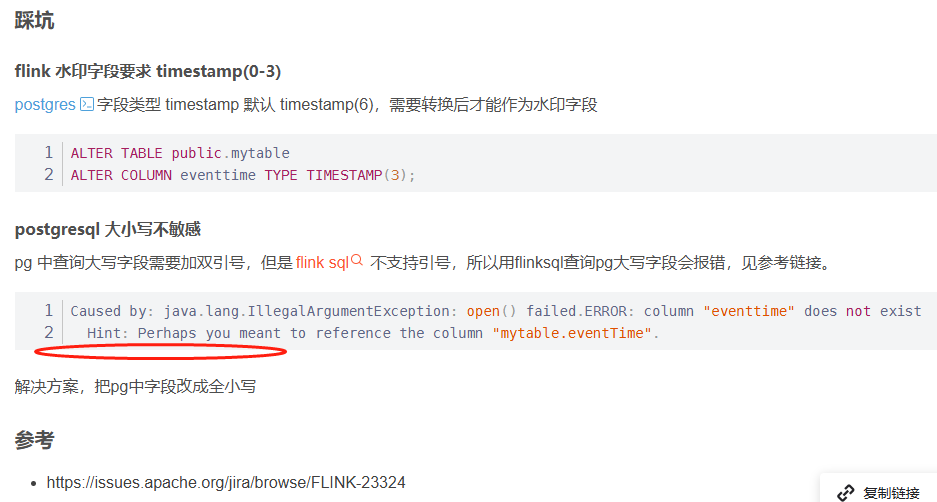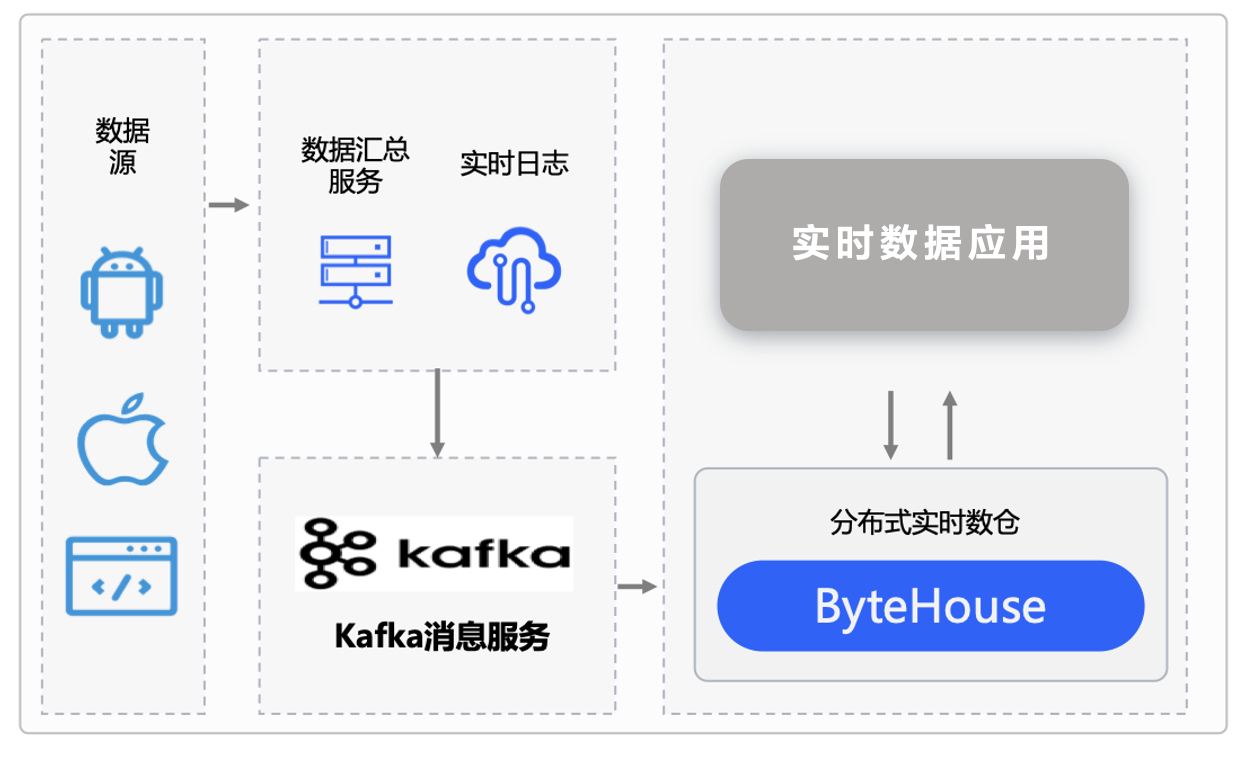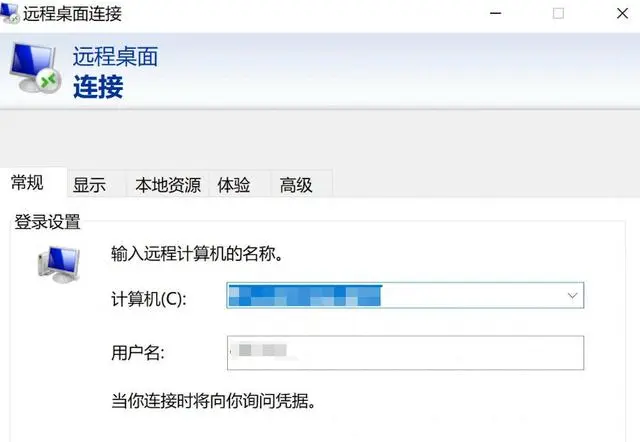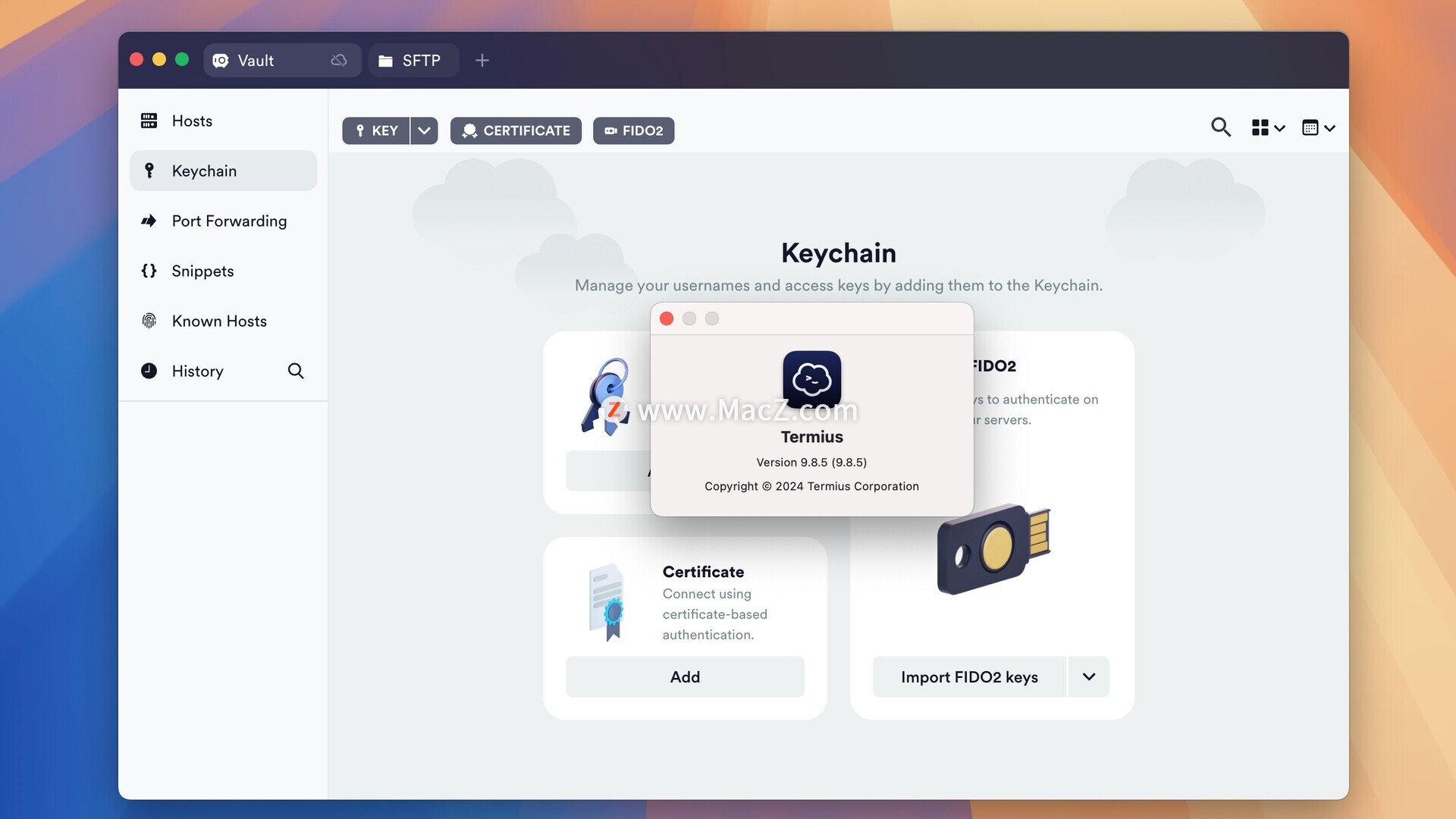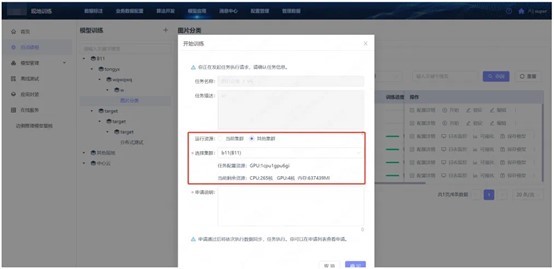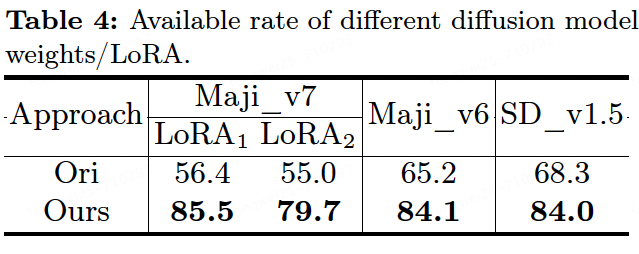目录
- Overview
- Lock和Latch辨析
- 设计目标
- 大致分类
- Hash Table Latches
- Page Latches
- Slot Latches
- B+Tree Latches
- 并发问题
- Latch Crabbing/Couping
- Optimistic Coupling(乐观锁)
- Leaf Node Scan
Overview
Lock和Latch辨析
Lock:抽象的,逻辑的,整体统筹Latch:具体的,原语性的,自我管理
本节主要探讨Latch。
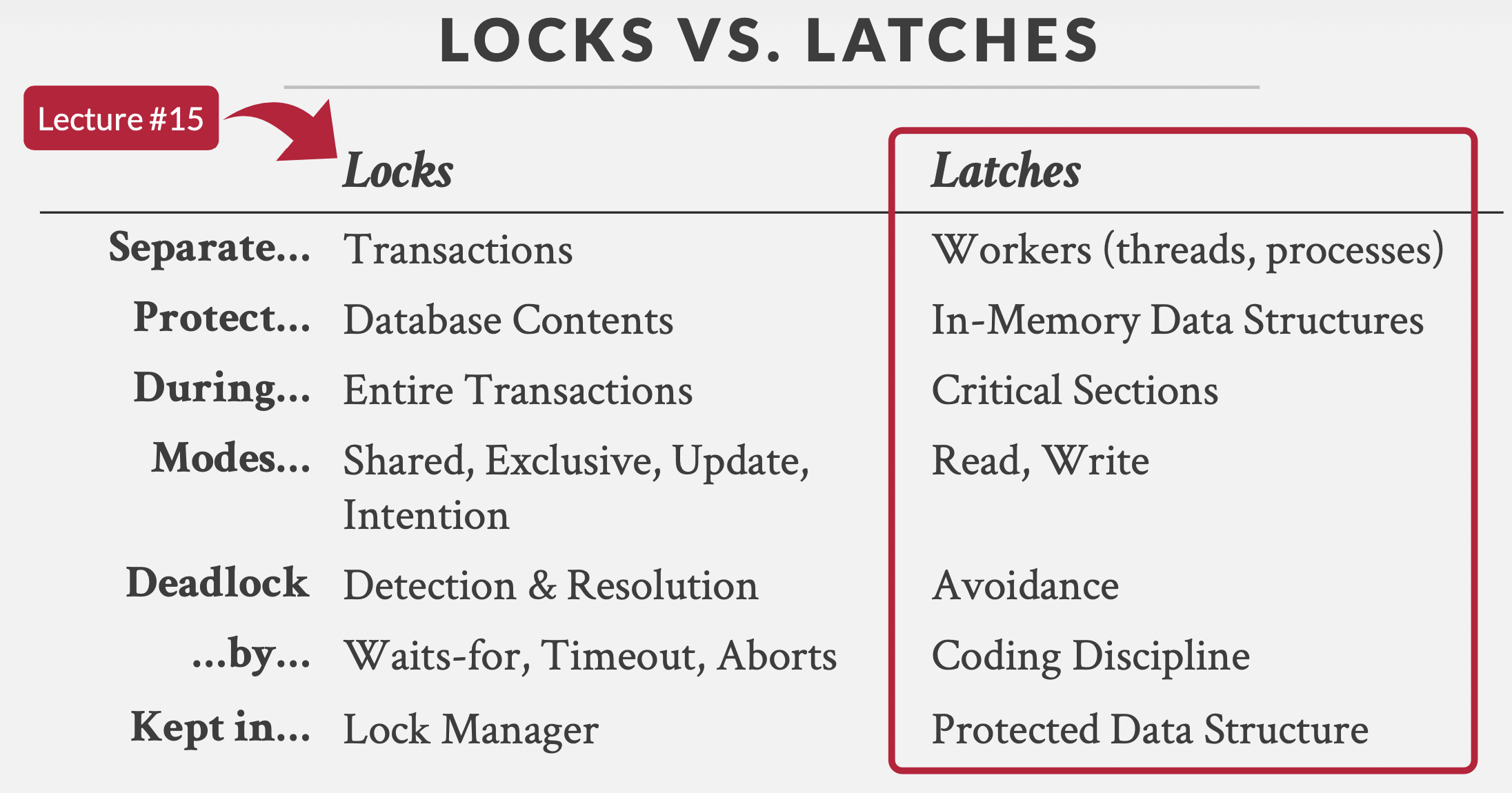
设计目标
- 内存占用少,无竞态时执行迅速
- 等待时间过长时取消调度
大致分类
- 自旋锁(Test-and-Set Spin Latch)
- 阻塞互斥锁(Blocking OS Mutex)
- 读写锁(Reader-Writer Latches)
| 特性 | Test-and-Set Spinlock | Blocking OS Mutex | Reader-Writer Locks |
|---|---|---|---|
| 实现 | 基于原子操作的自旋等待 | 操作系统级阻塞 | 允许多读单写 |
| 锁争用时的处理 | 自旋等待,消耗 CPU | 阻塞等待,减少 CPU 消耗 | 读操作可以并发,写操作排他 |
| 适用场景 | 短期锁、轻度锁争用 | 长期锁、重度锁争用 | 读多写少 |
| 优点 | 无上下文切换,性能高 | 避免自旋消耗,适合长时间等待 | 读写并发,适合读多写少 |
| 缺点 | CPU 资源消耗高,锁持有时间长时效率低 | 上下文切换开销较高 | 写者饥饿问题 |
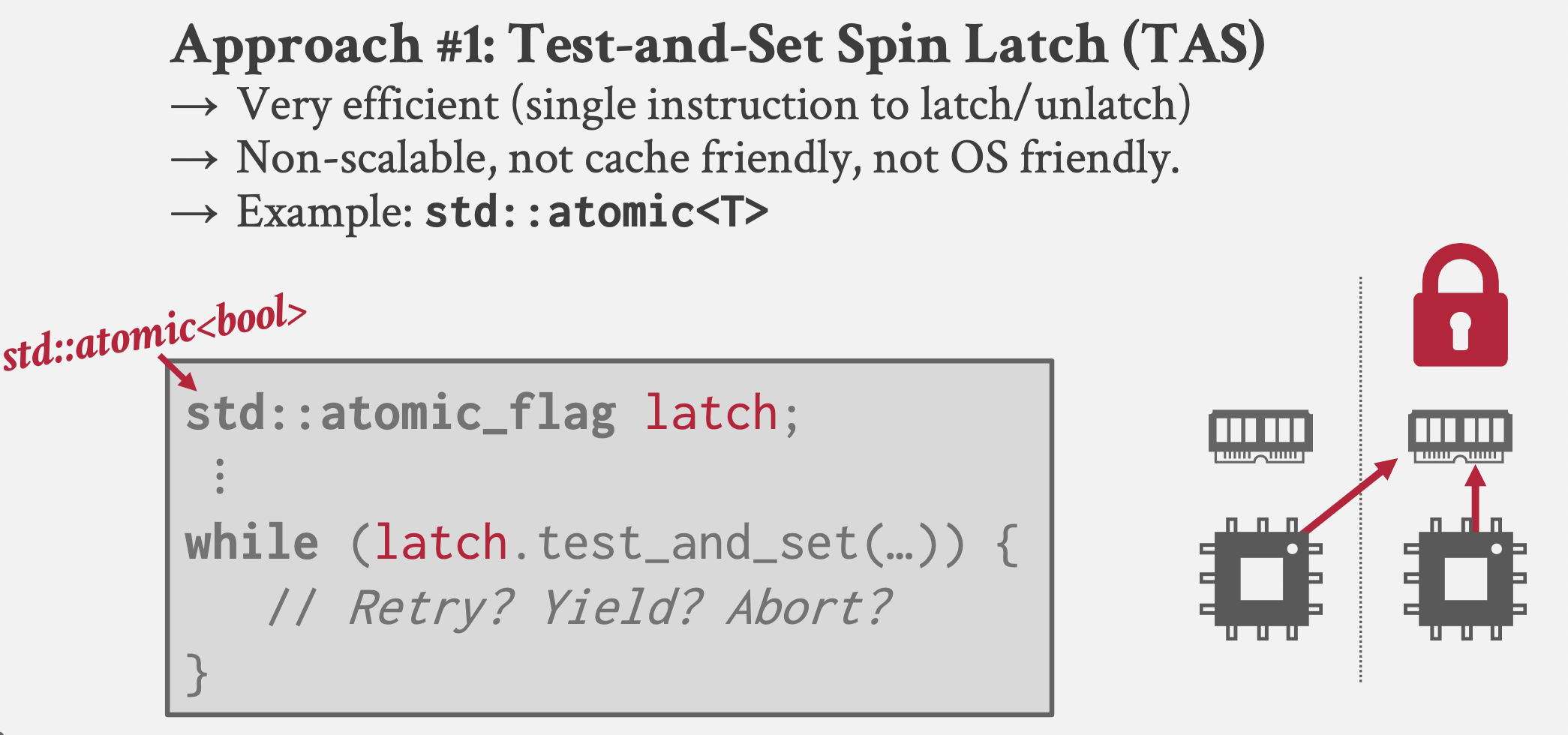
C++中的mutex -> pthread -> Linux futex(fast user mutex):先在用户空间用自旋锁,如果获取不到锁,陷入内核态调用阻塞锁进入阻塞队列。
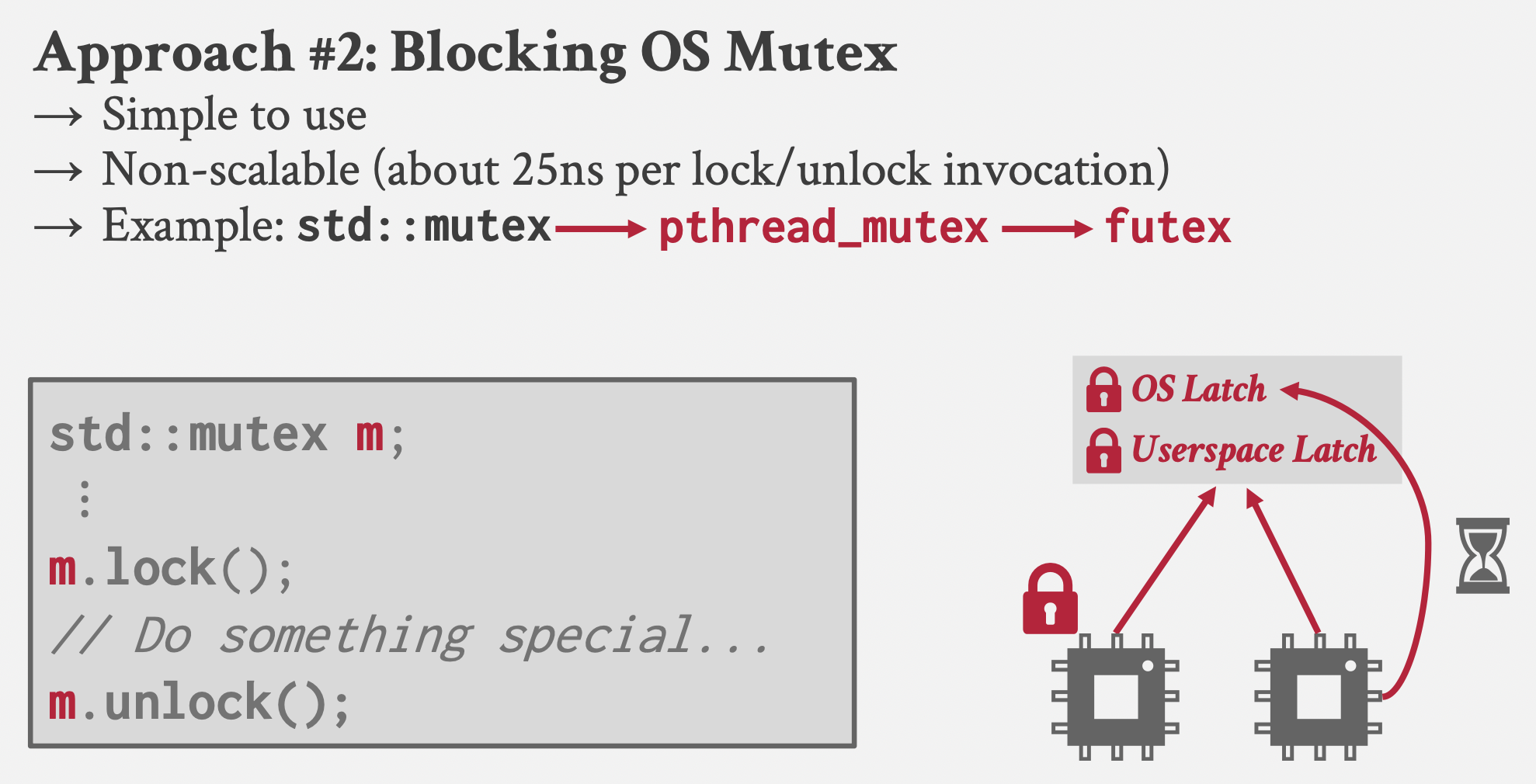
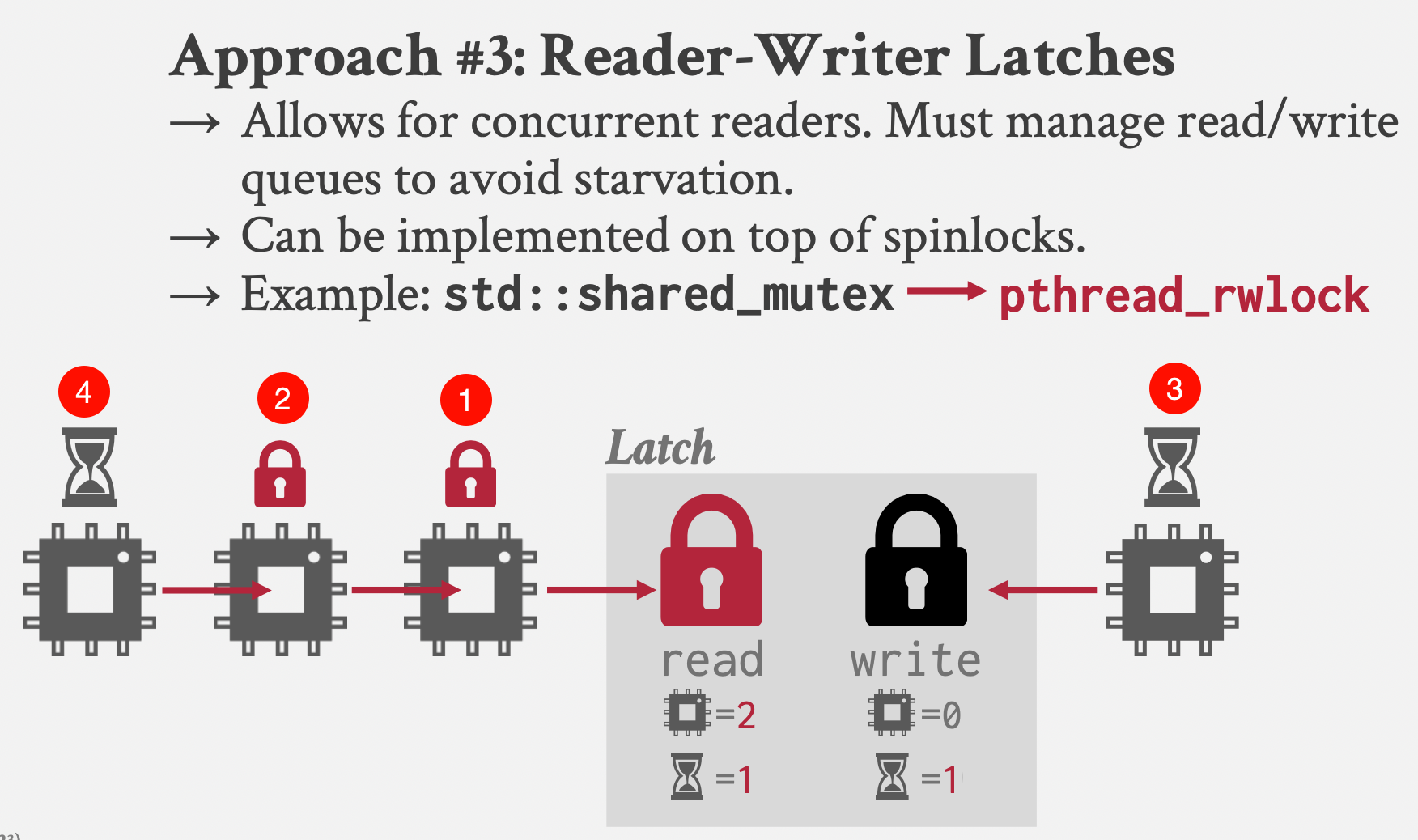
Hash Table Latches
两种粒度:Page Latches和Slot Latches
Page Latches
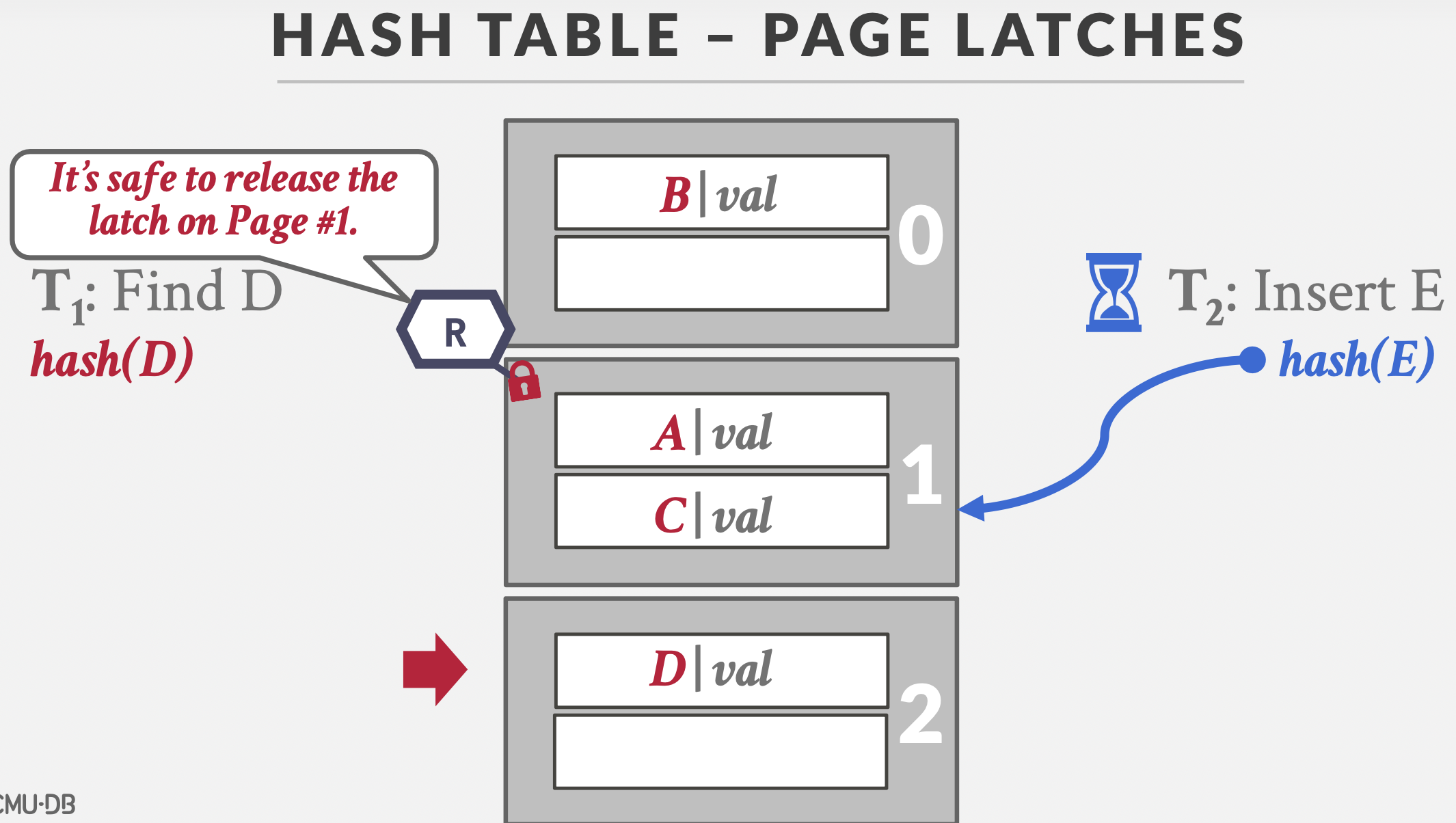
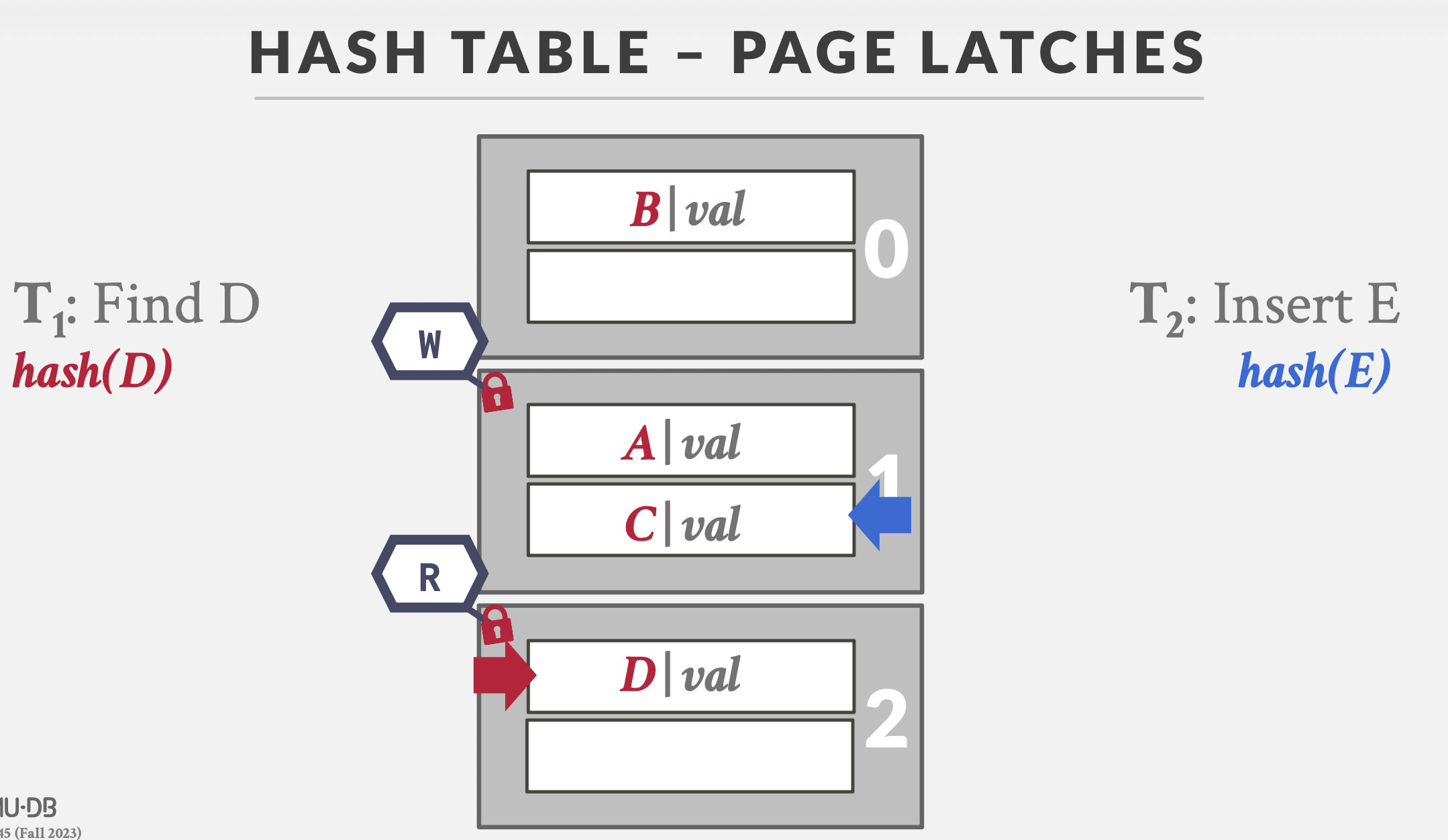
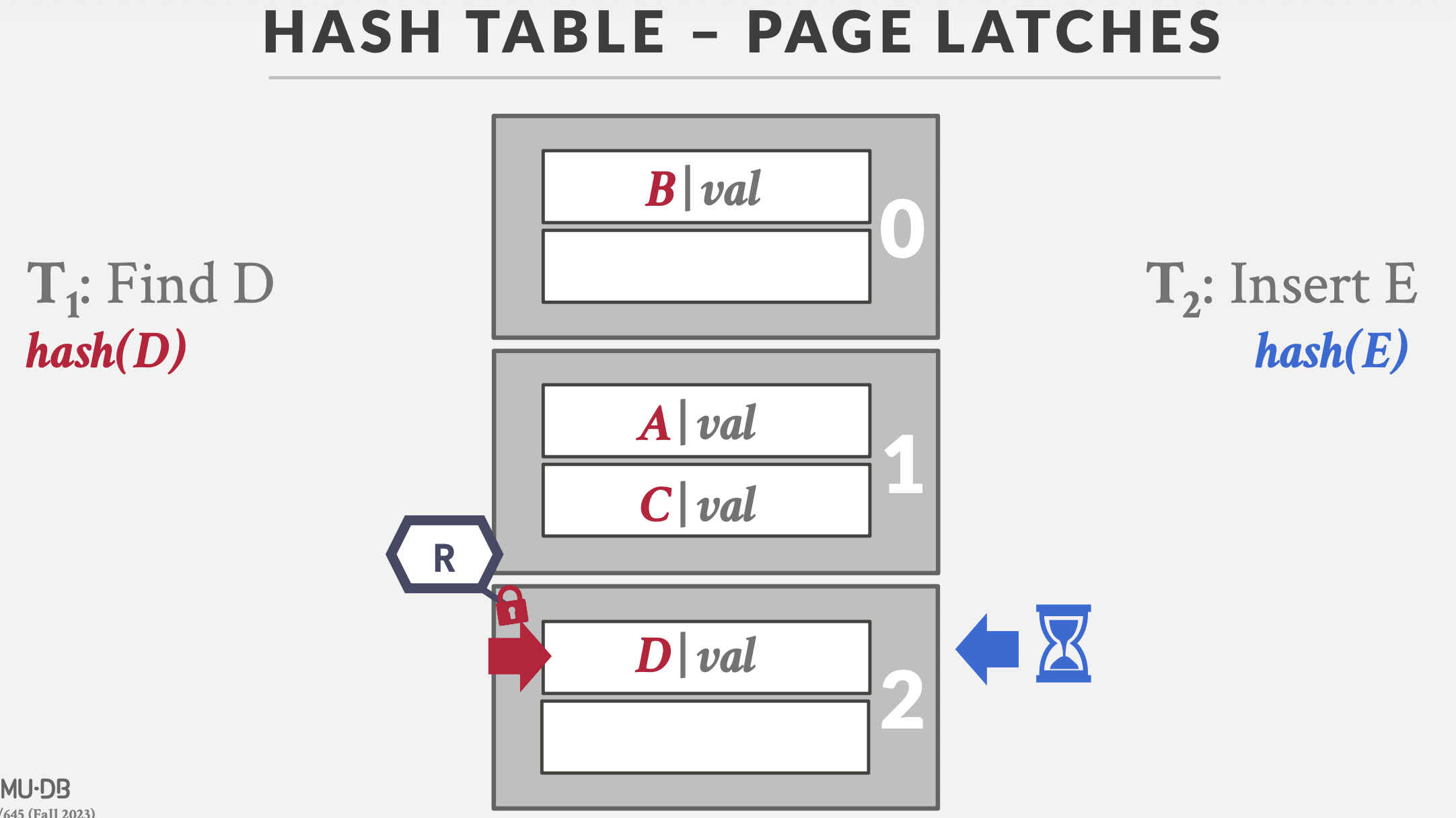
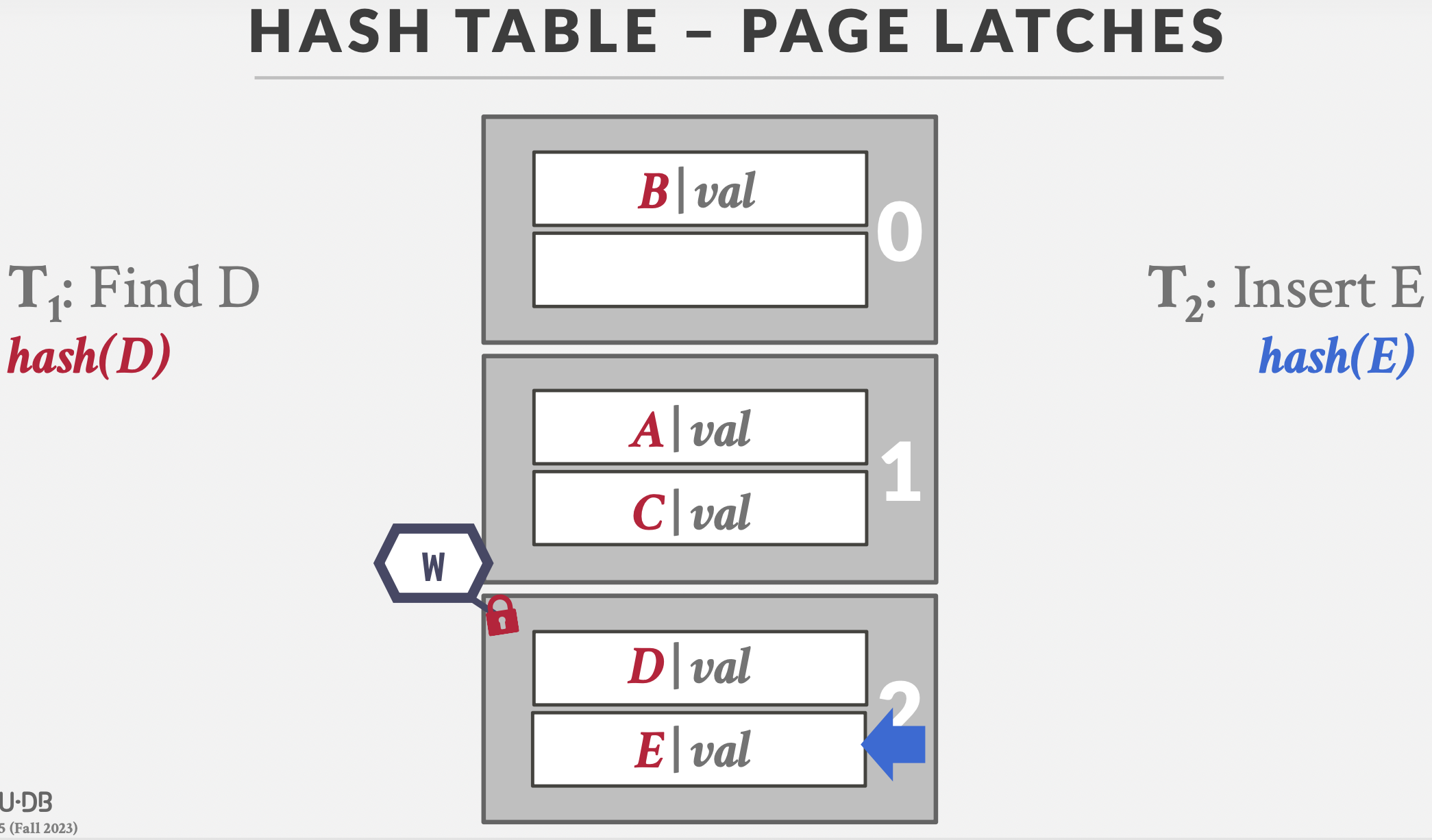
- T1给page1上读锁,T2等待(如左上图)
- T1查看page2无读锁,给page2上读锁,释放page1读锁;T2访问page1,上写锁(如右上图)
- T2访问page2,但由于有T1读锁,等待(如左下图)
- T1释放page2读锁,T2结束等待,给page2上写锁,写入
E|val(如右下图)
Slot Latches
整体过程和Page Latches类似,只不过粒度变了。
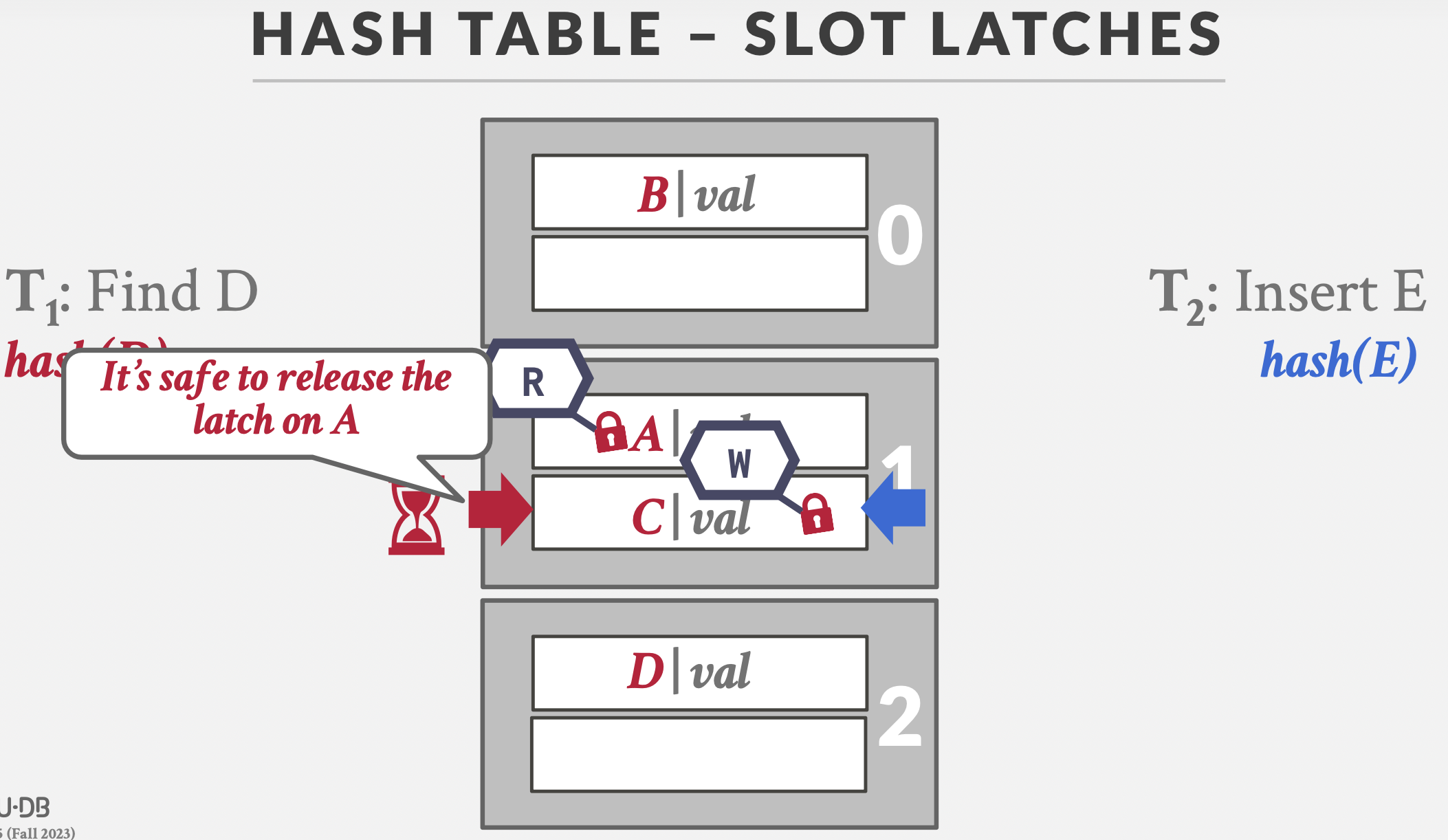
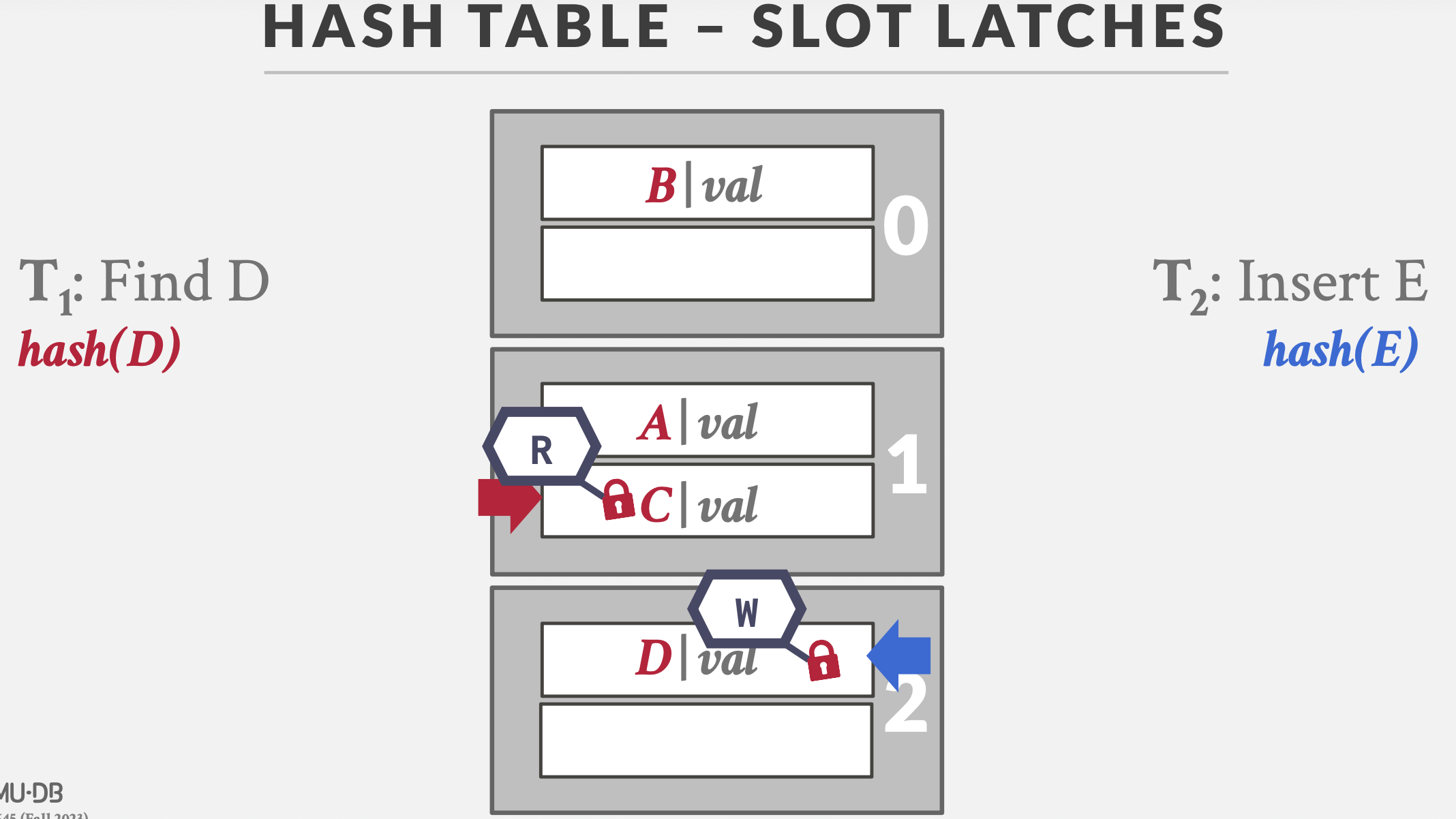
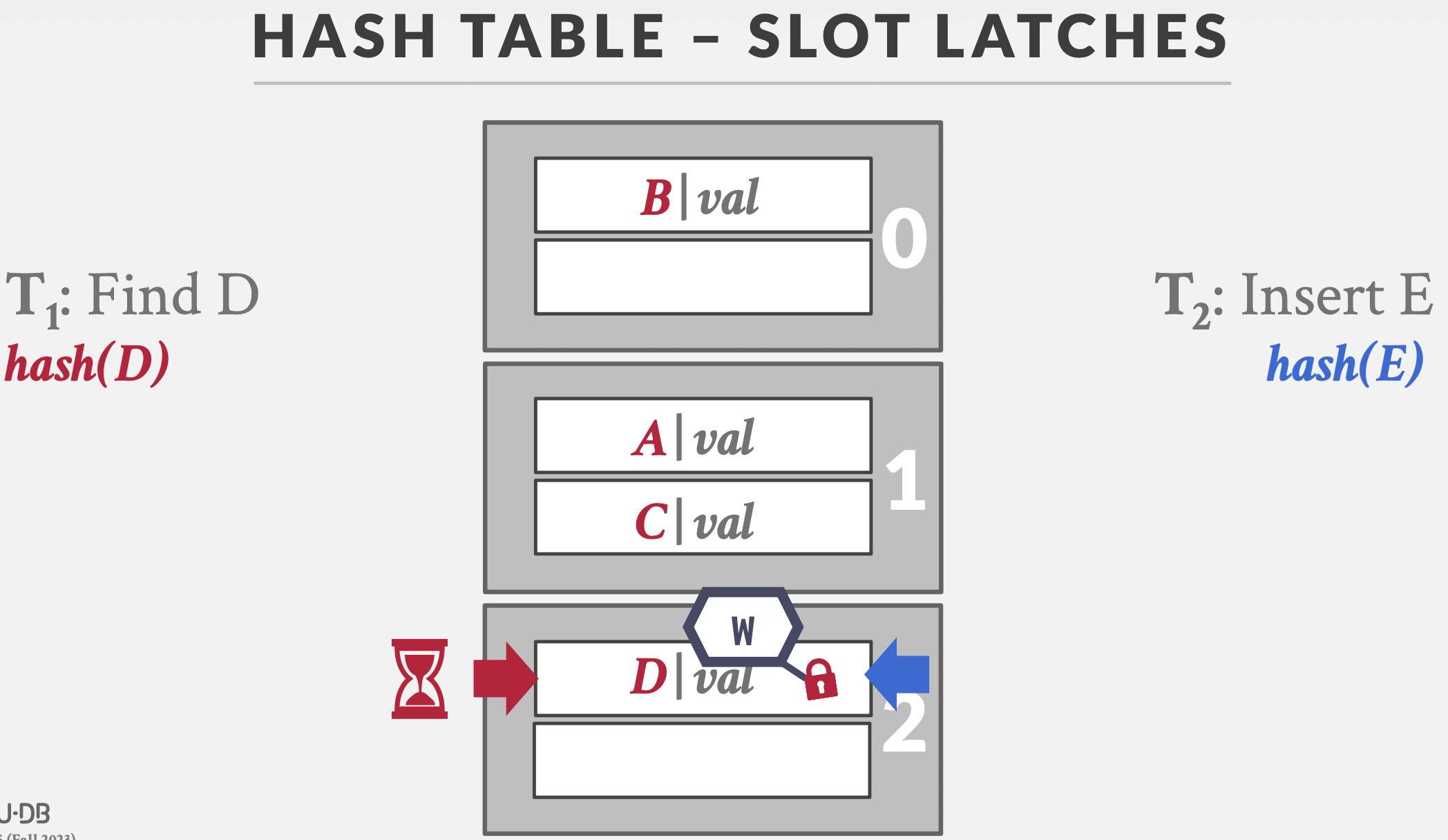
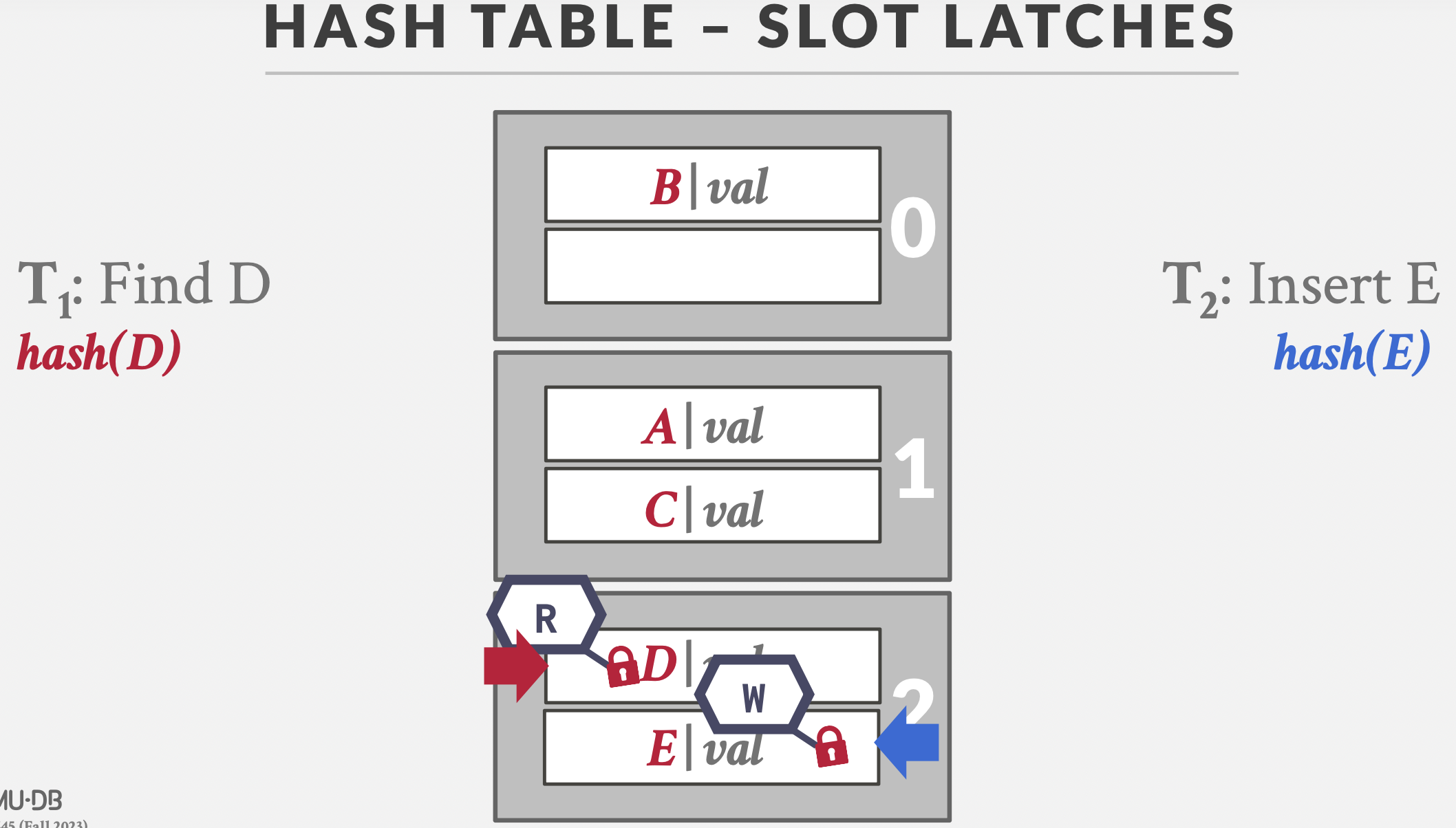
- T1给Slot A上读锁,T2给Slot C上写锁
- T1访问Slot C,但是由于有T2的写锁,释放Slot A写锁,在C等待(如左上图)
- T2访问Slot D,释放Slot C写锁,给Slot D上写锁;T1可以访问Slot C,上读锁(如右上图)
- 重复上述两个步骤(左下图和右下图)
B+Tree Latches
并发问题
相比于哈希表,B+树并发的难点在于树的结构会发生分裂或合并。
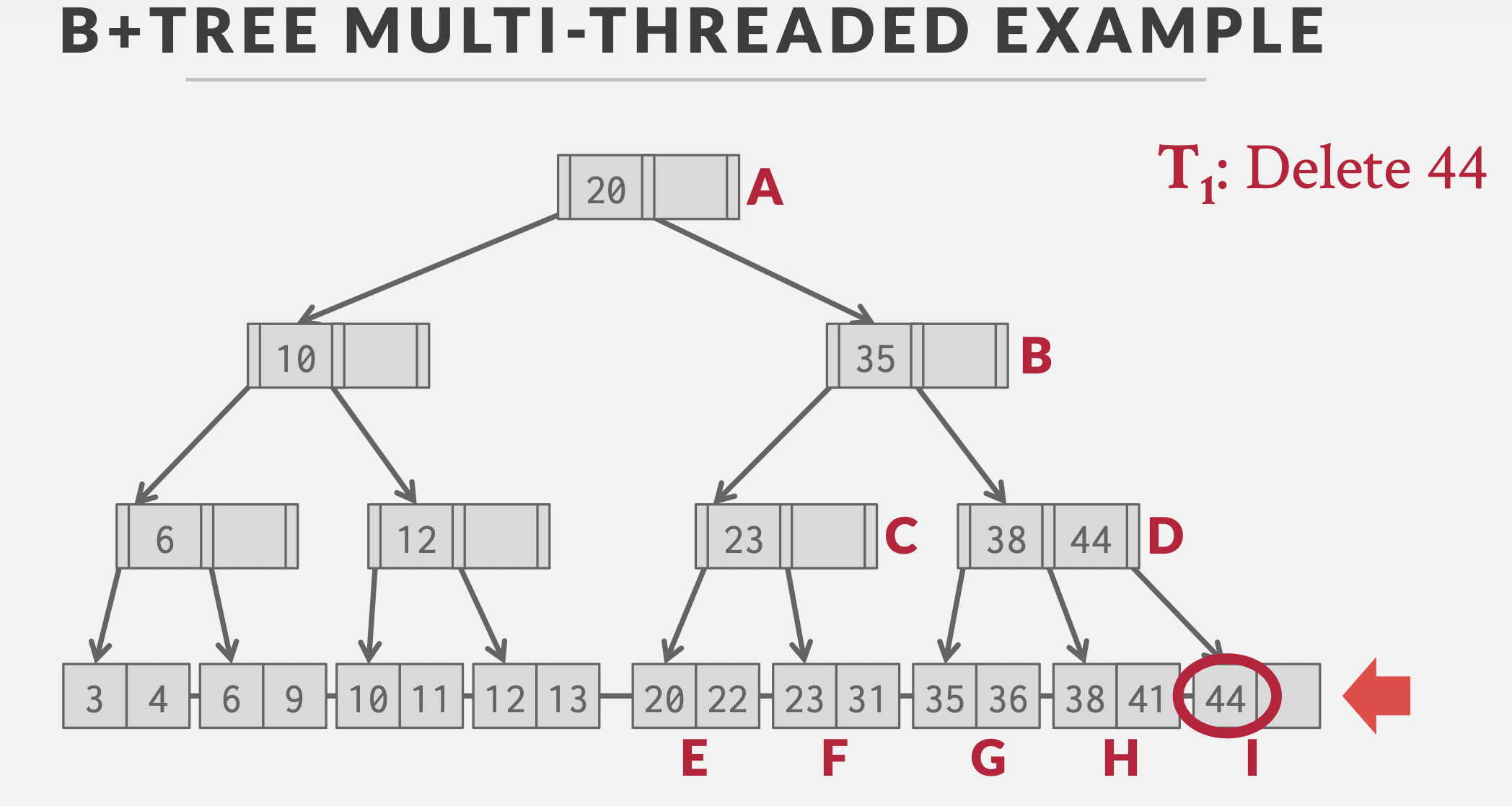
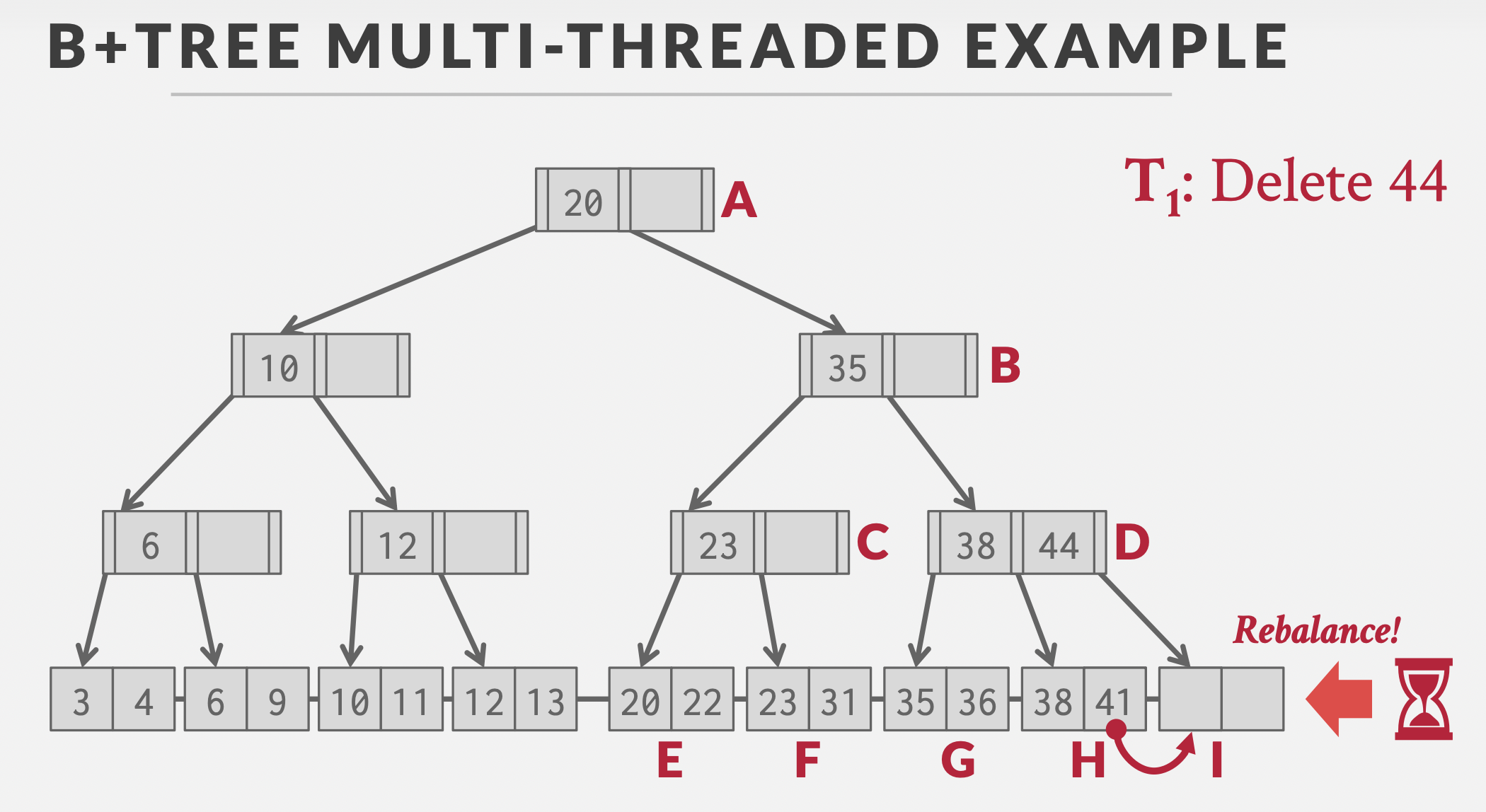
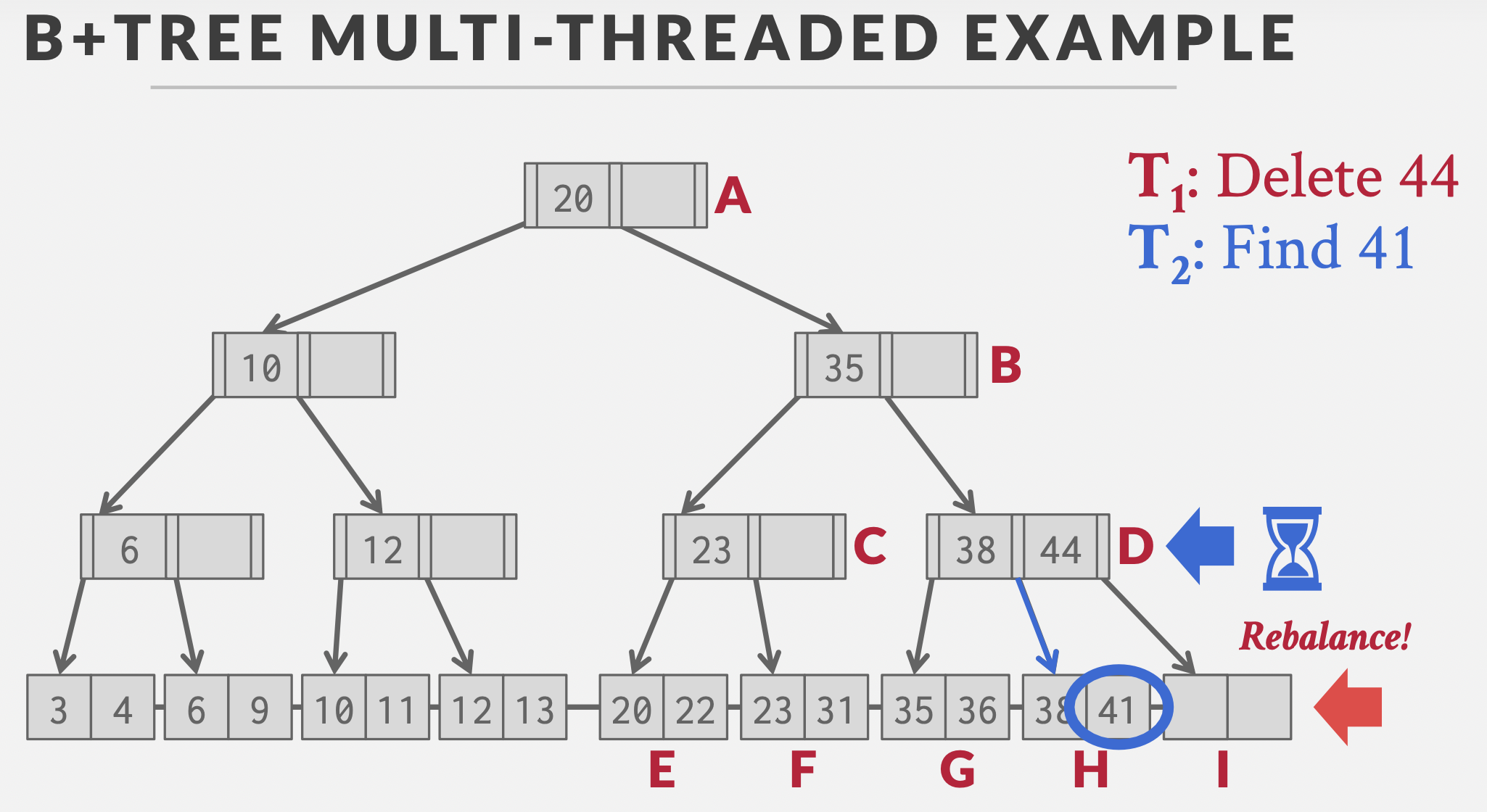
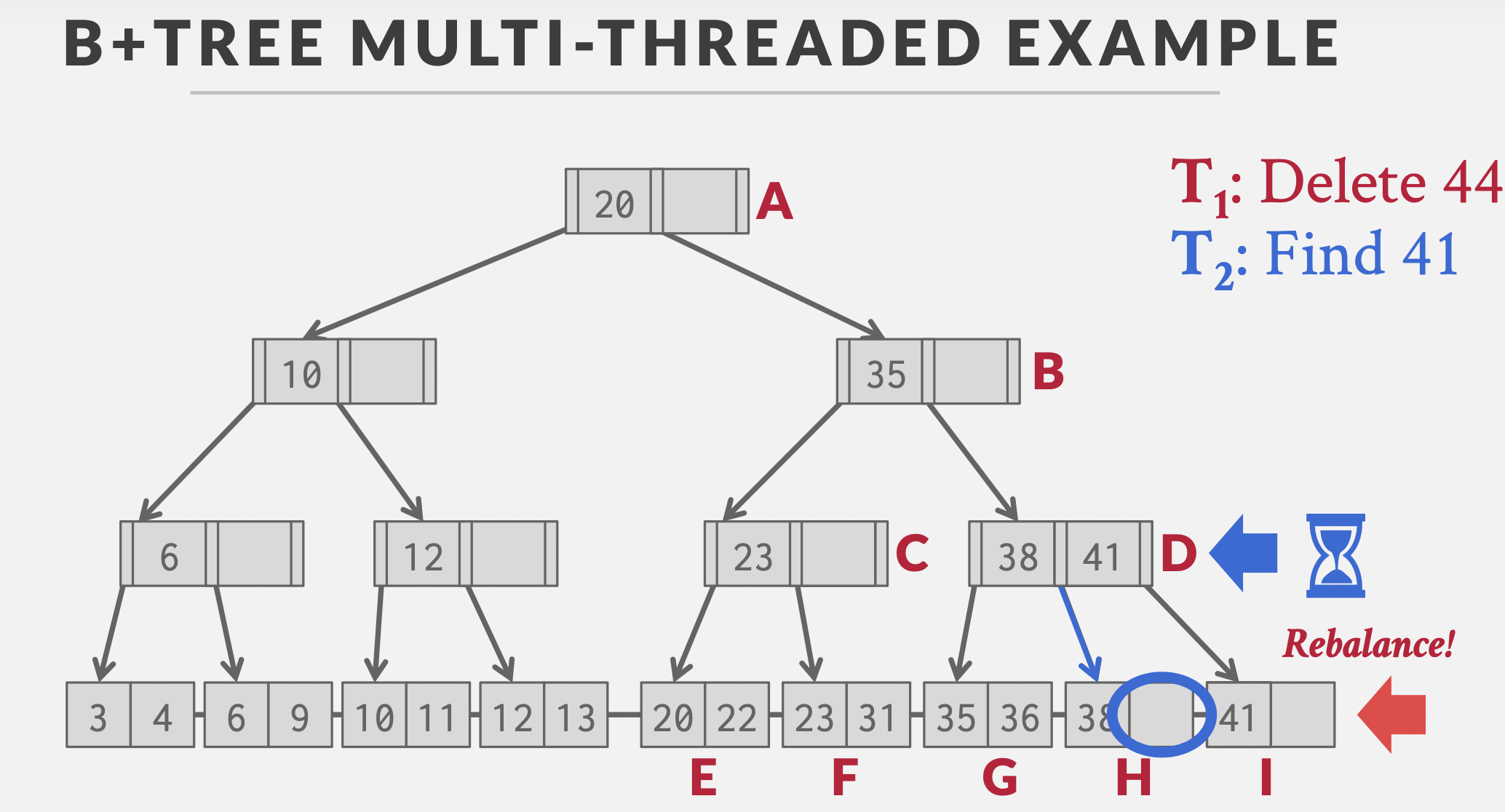
- T1找到了需要删除的值44(如左上图)
- 删除了值44,此时需要偷(steal)左兄弟的值41进行合并,保证叶子结点半满,但是T1被调度,进入休眠(如右上图)
- T2找到了需要删除的值41,准备读取值41,但是此时T2被调度,进入休眠(如左下图)
- T1唤醒,进行结点合并,41移动到了新的位置
- T2被唤醒,读取41,但是数据已经被移动(如右下图)
Latch Crabbing/Couping
具体步骤:
- 得到父结点的锁
- 得到子结点的锁
- 如果子结点是安全的,释放之前的锁,否则不释放
- 安全的定义:
- 对于查询:不做要求
- 对于插入:不满
- 对于删除:多于半满
例:查询
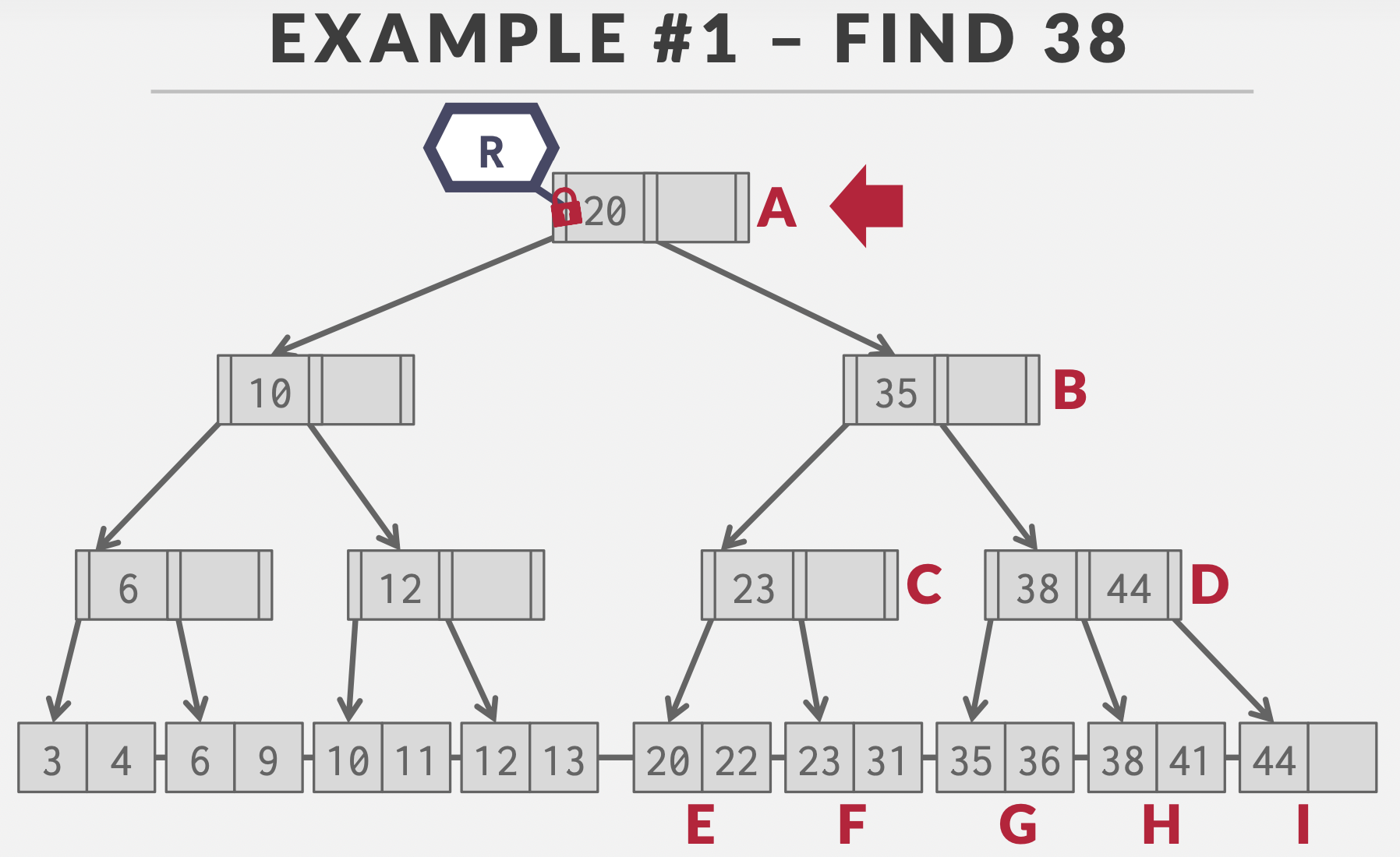
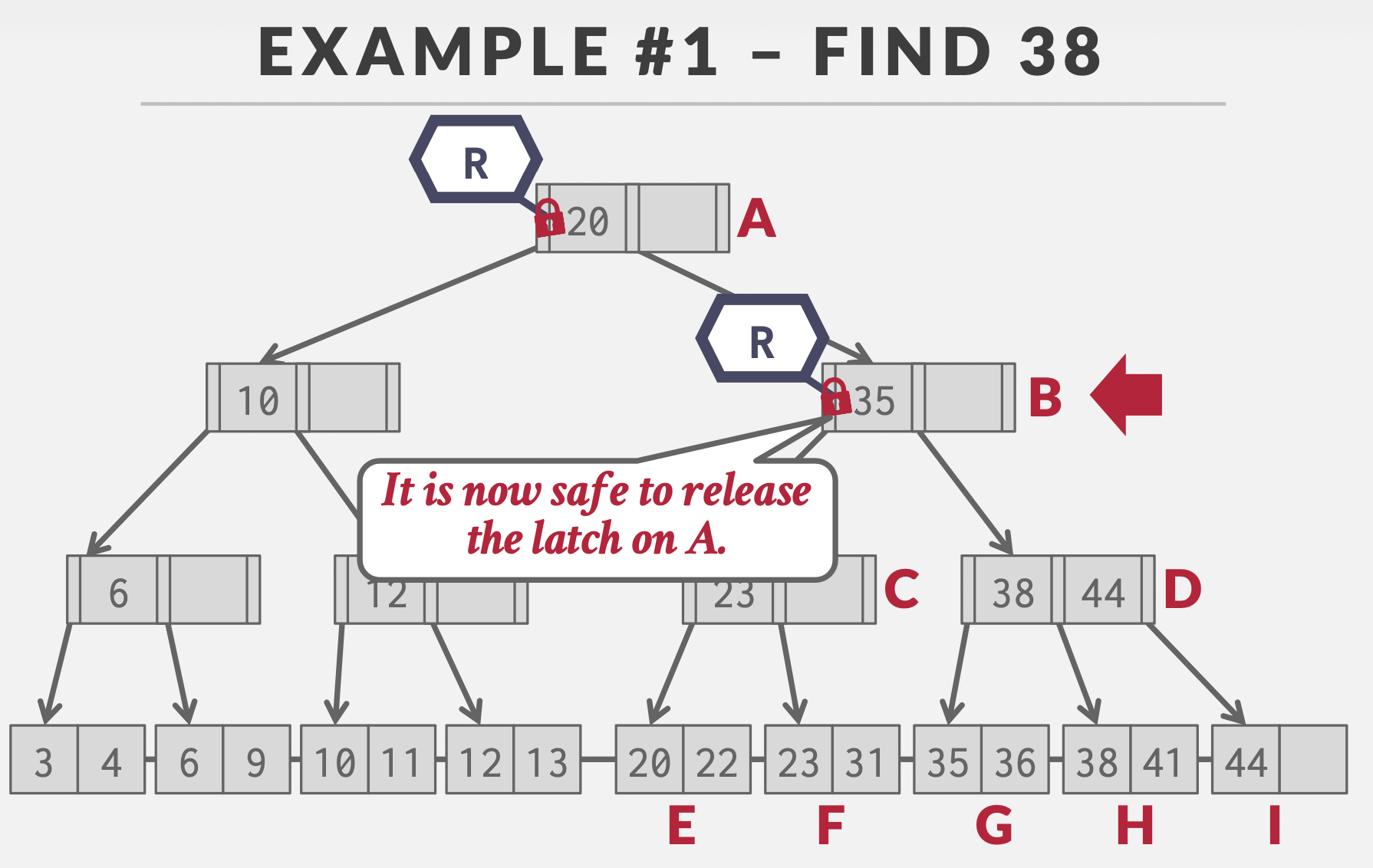
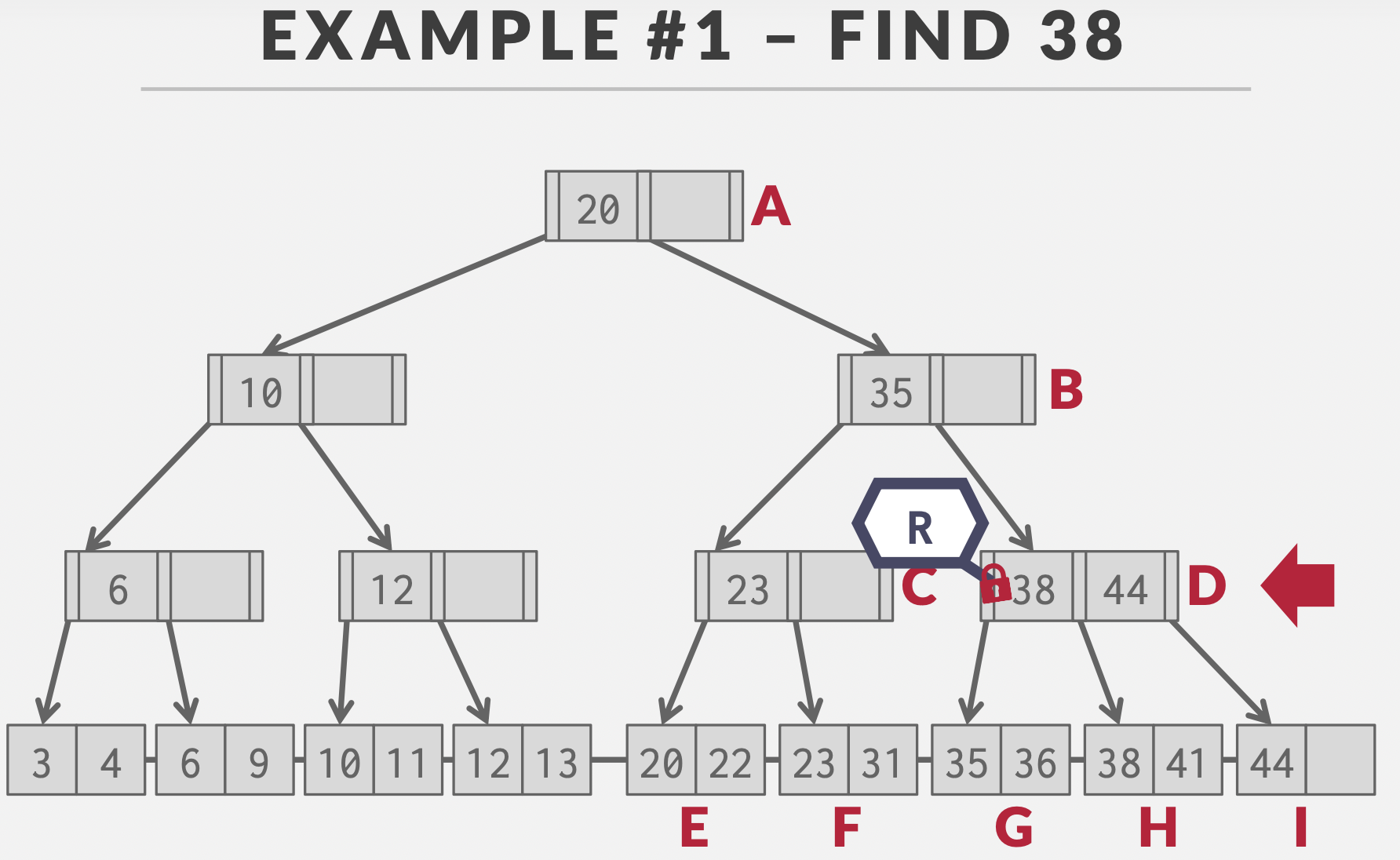
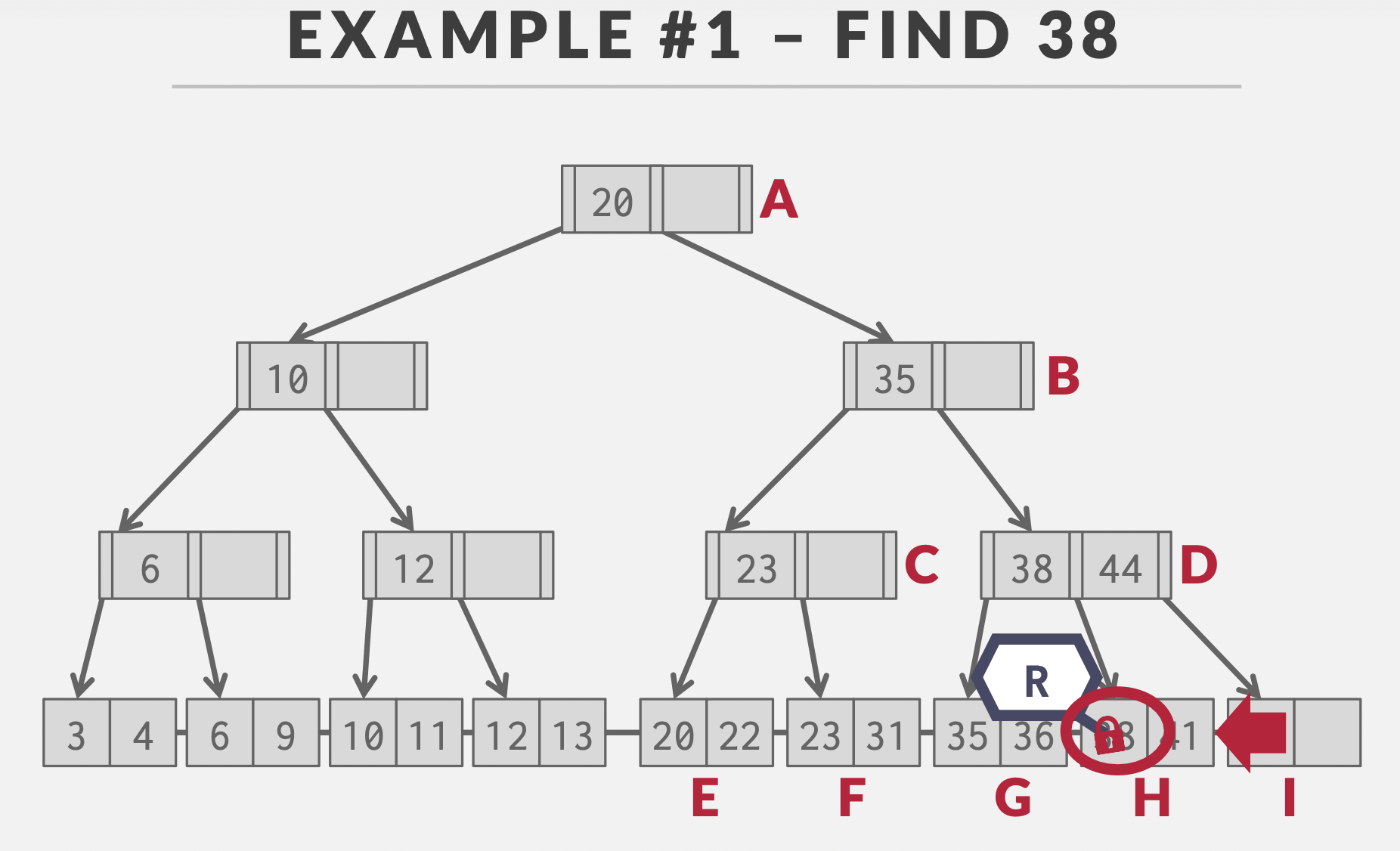
例:删除
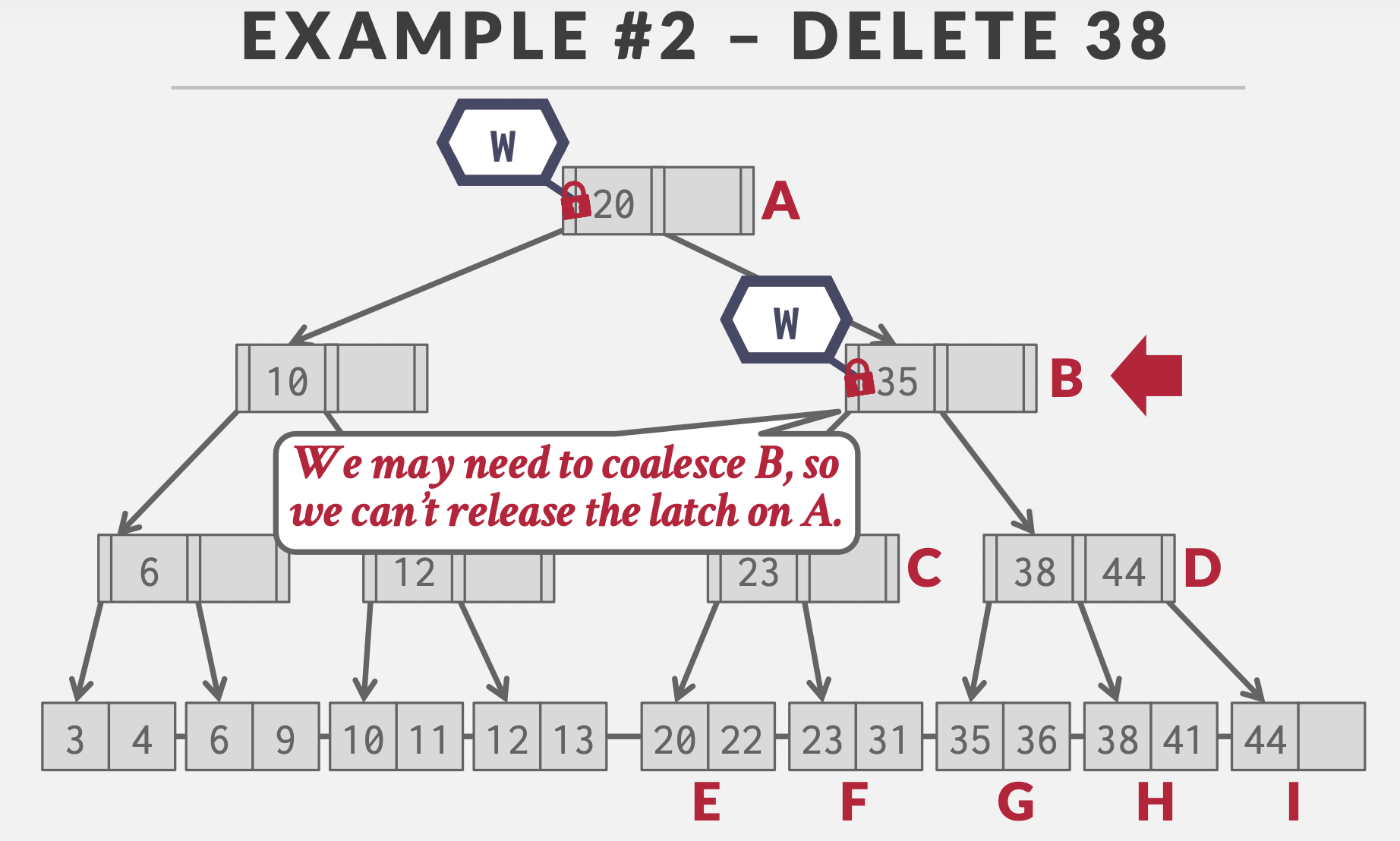
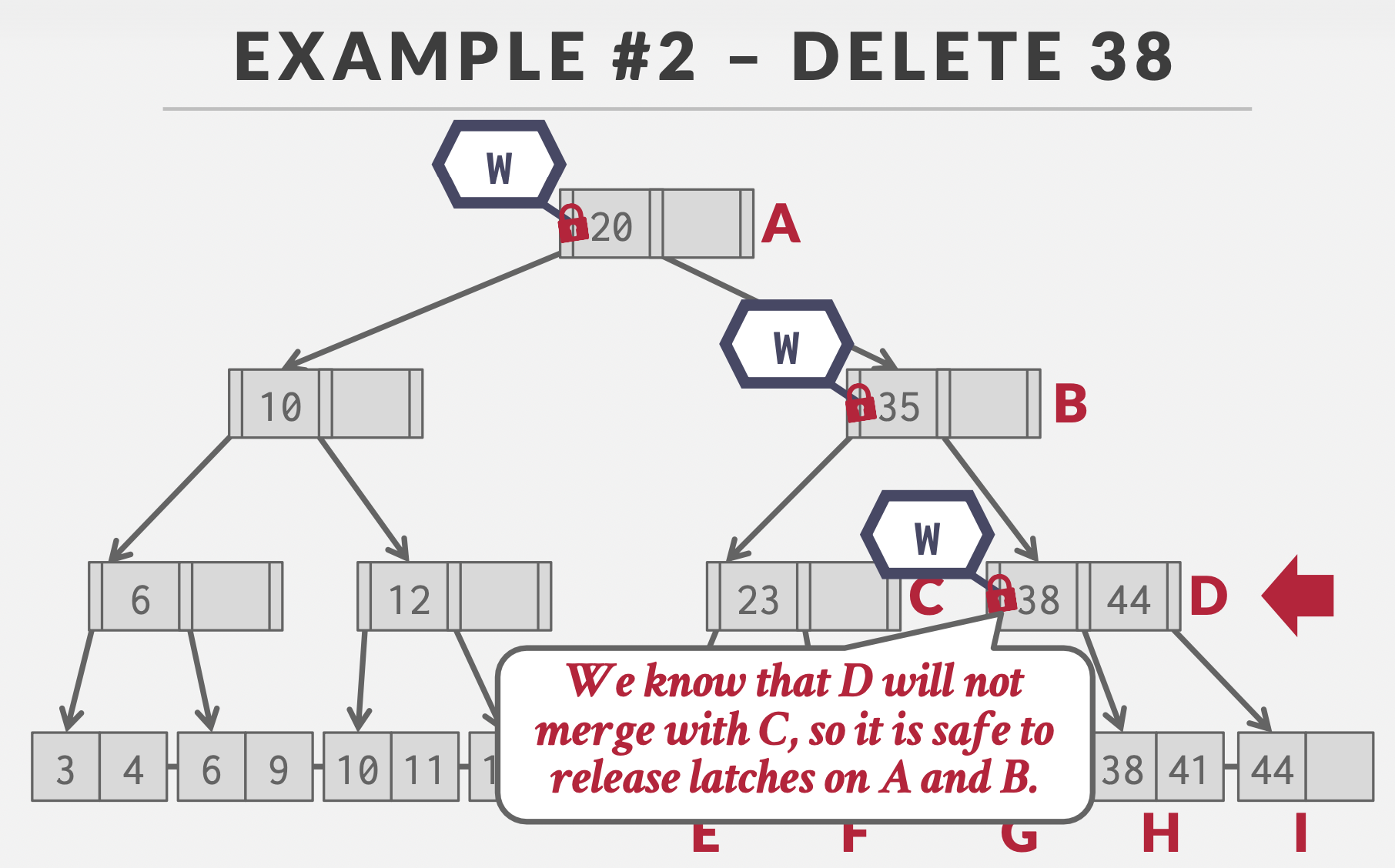
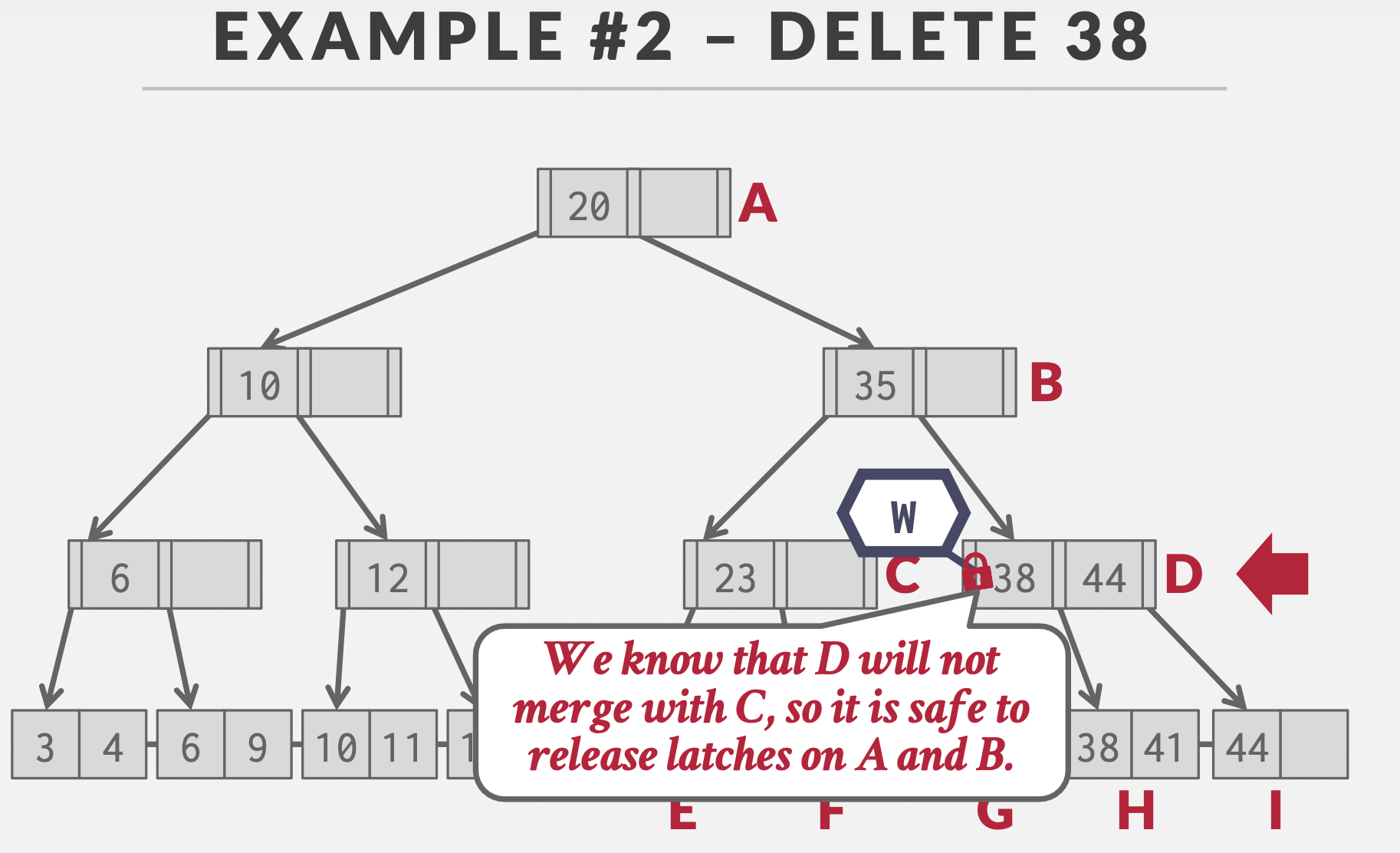
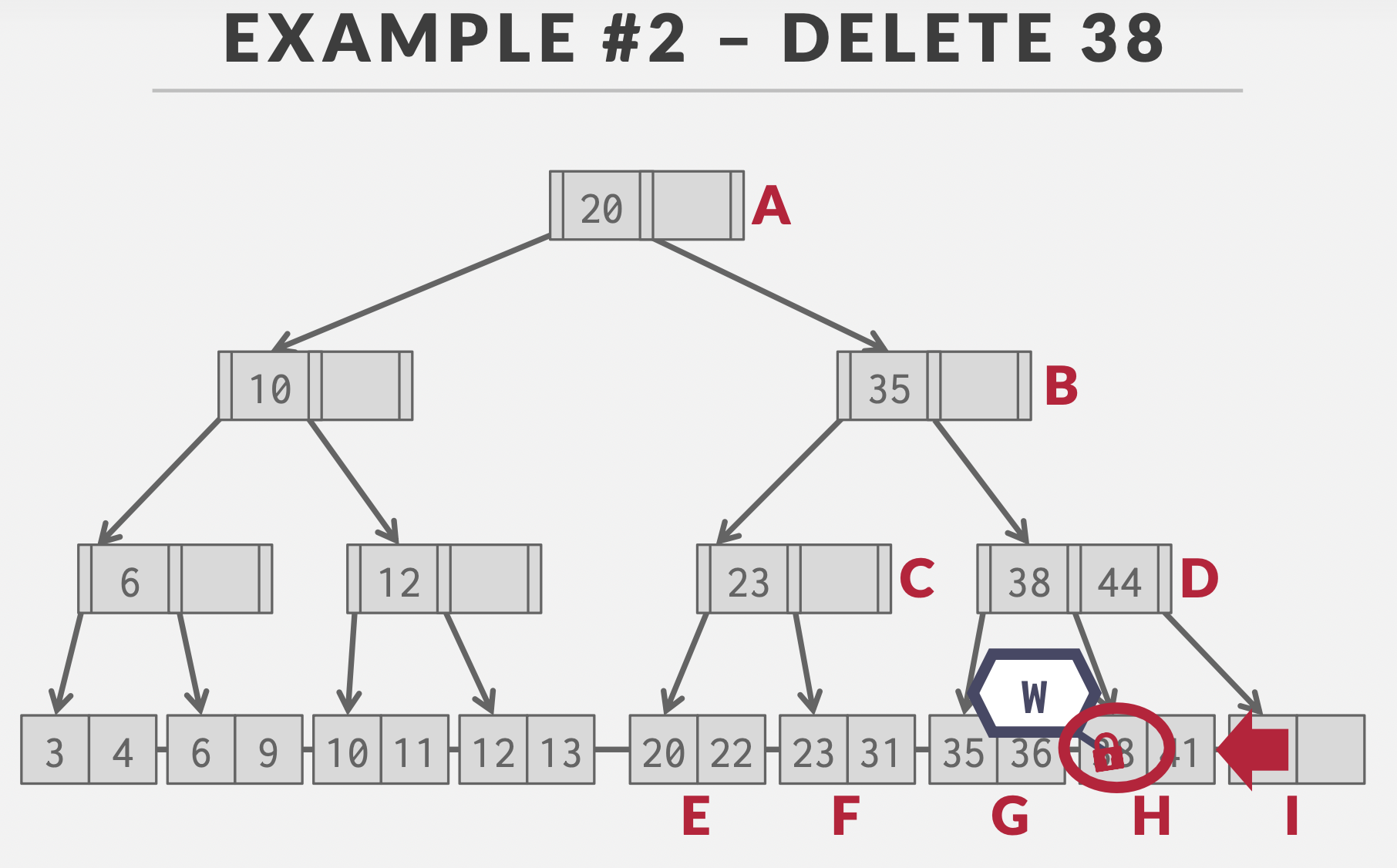
例:插入
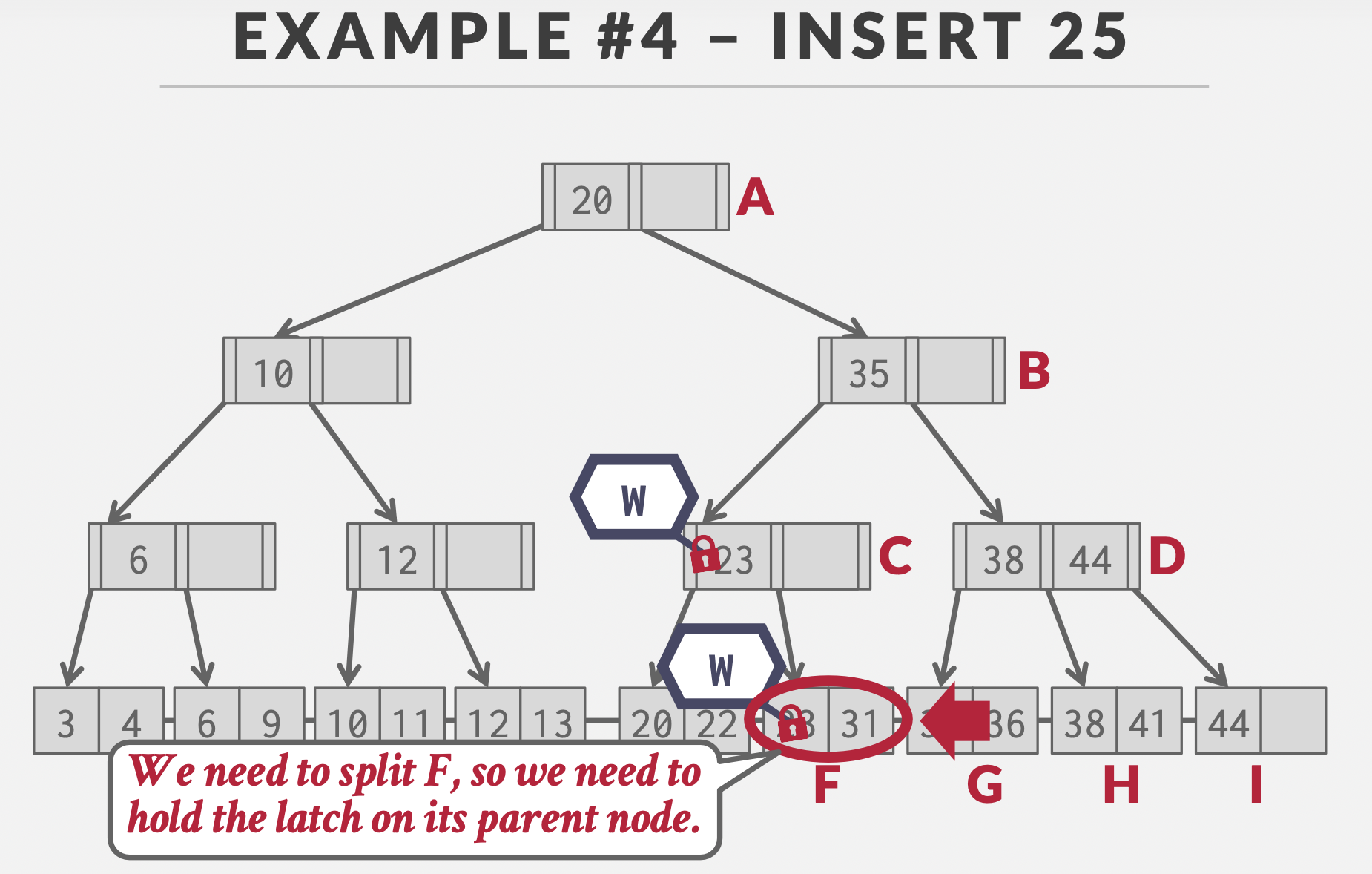
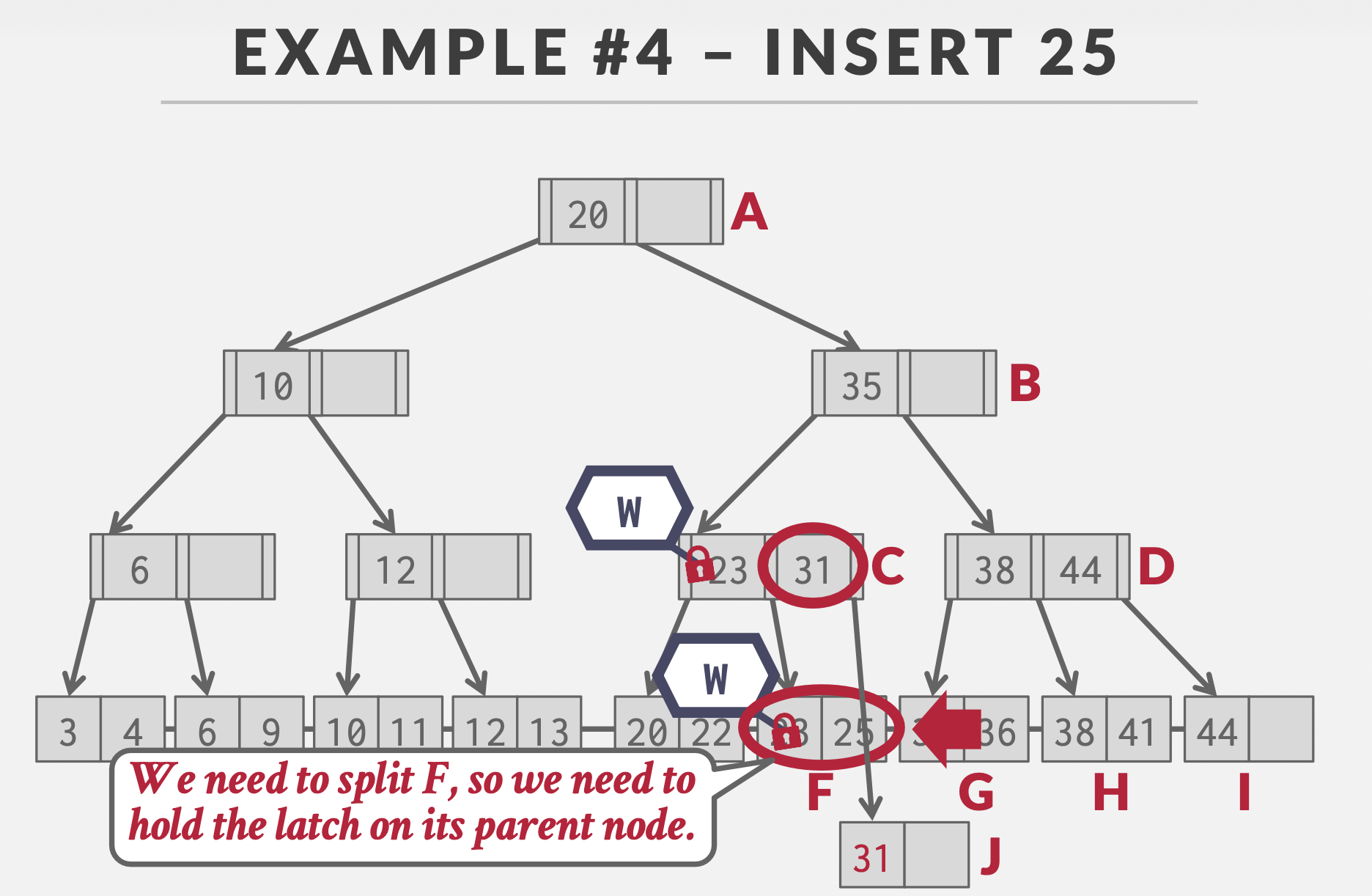
Optimistic Coupling(乐观锁)
观察:在插入和删除操作中,都会给根结点上写锁,造成系统在根结点处是串行的,有性能瓶颈。
实际上一个页存储一个结点,页大小很大,大多数时候不需要结点分裂,删除时结点也可以延迟合并,说明B+树结构大多数时候不会变化,上写锁的代价太大。
基本思想:上读锁,发现冲突后重新上写锁。
步骤:
- 查询:不变
- 插入/删除:
- 和查询一样,在路径上加读锁,到达叶子结点后加写锁
- 如果叶子结点不安全,重做;否则直接执行相关操作
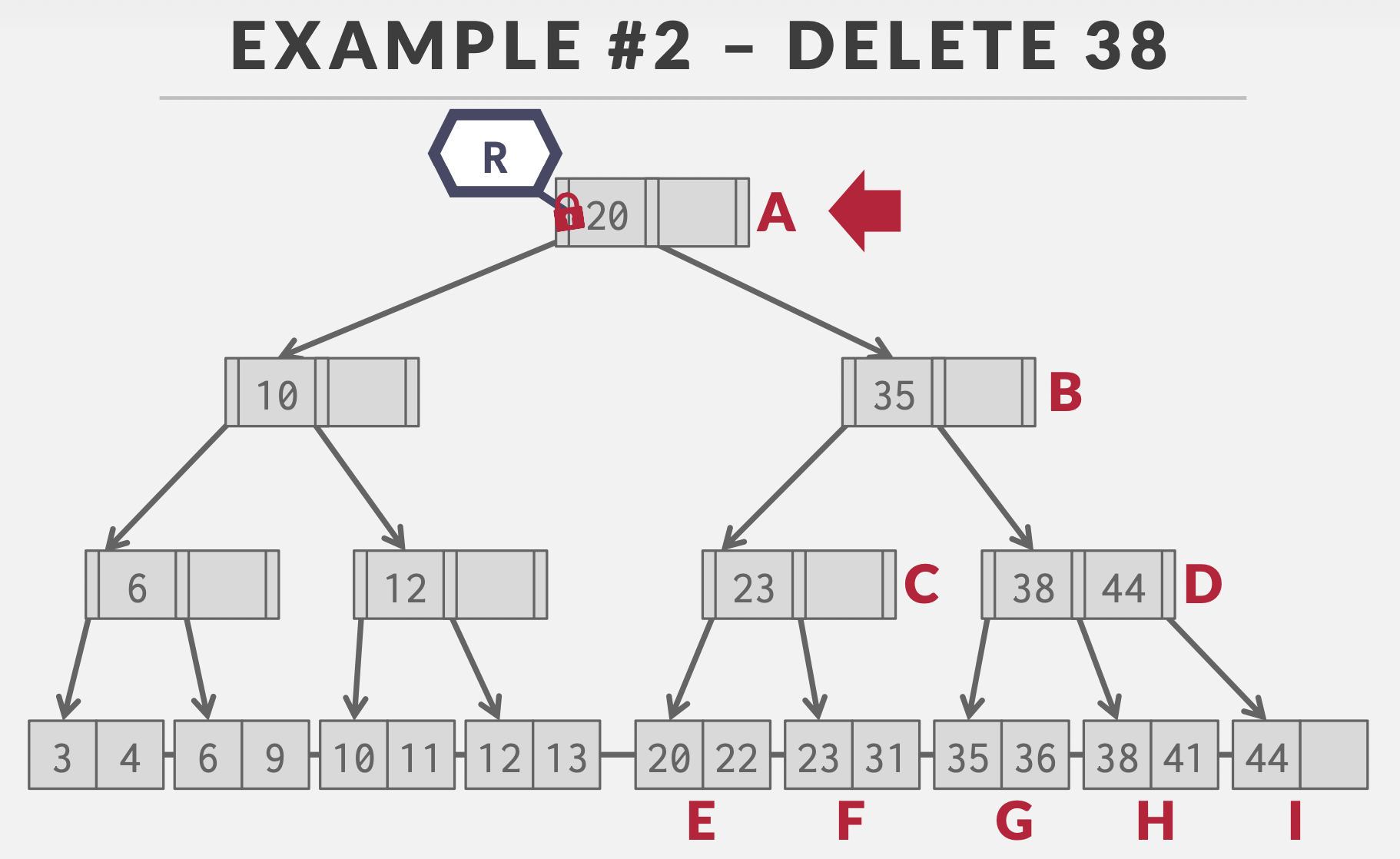
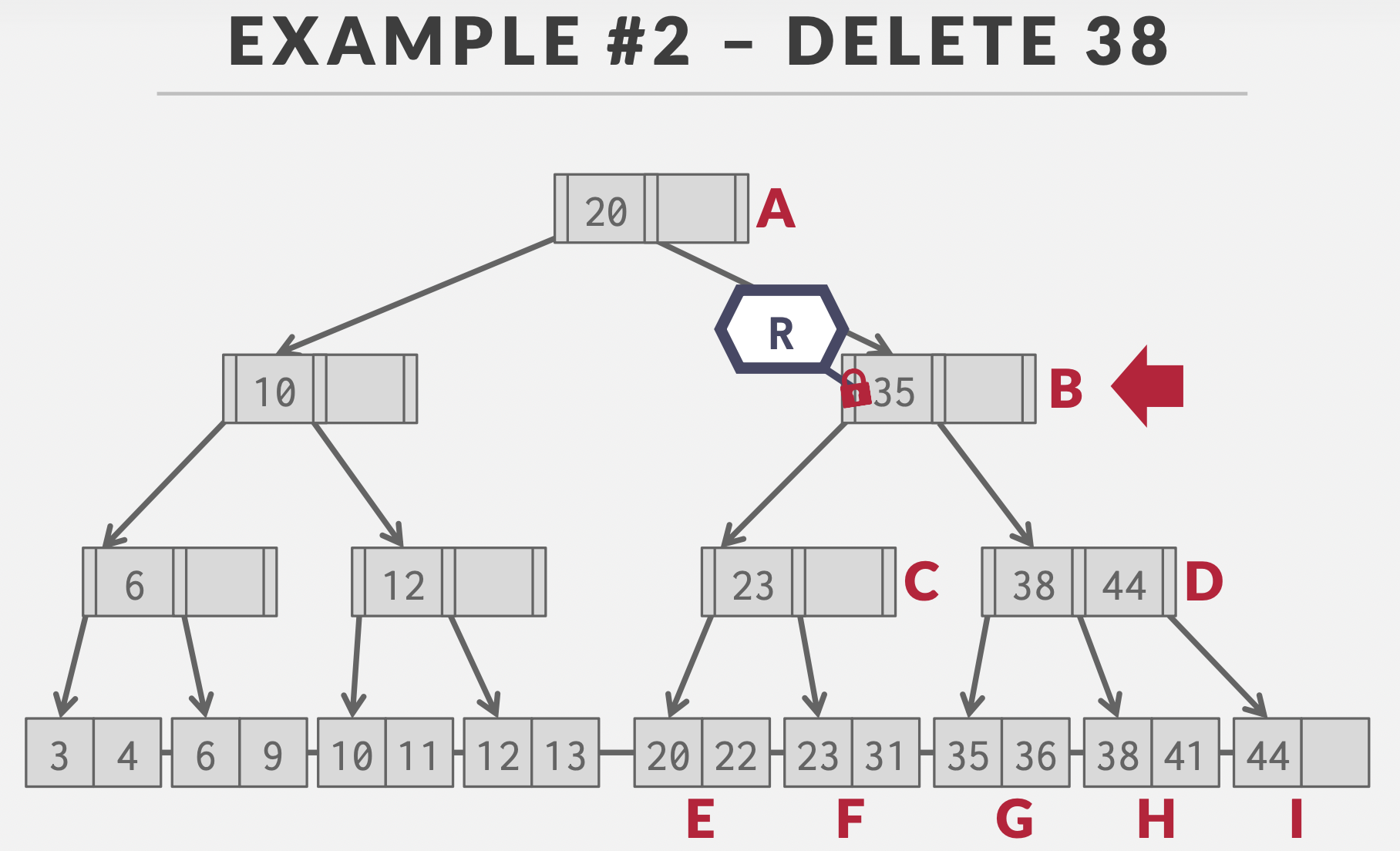
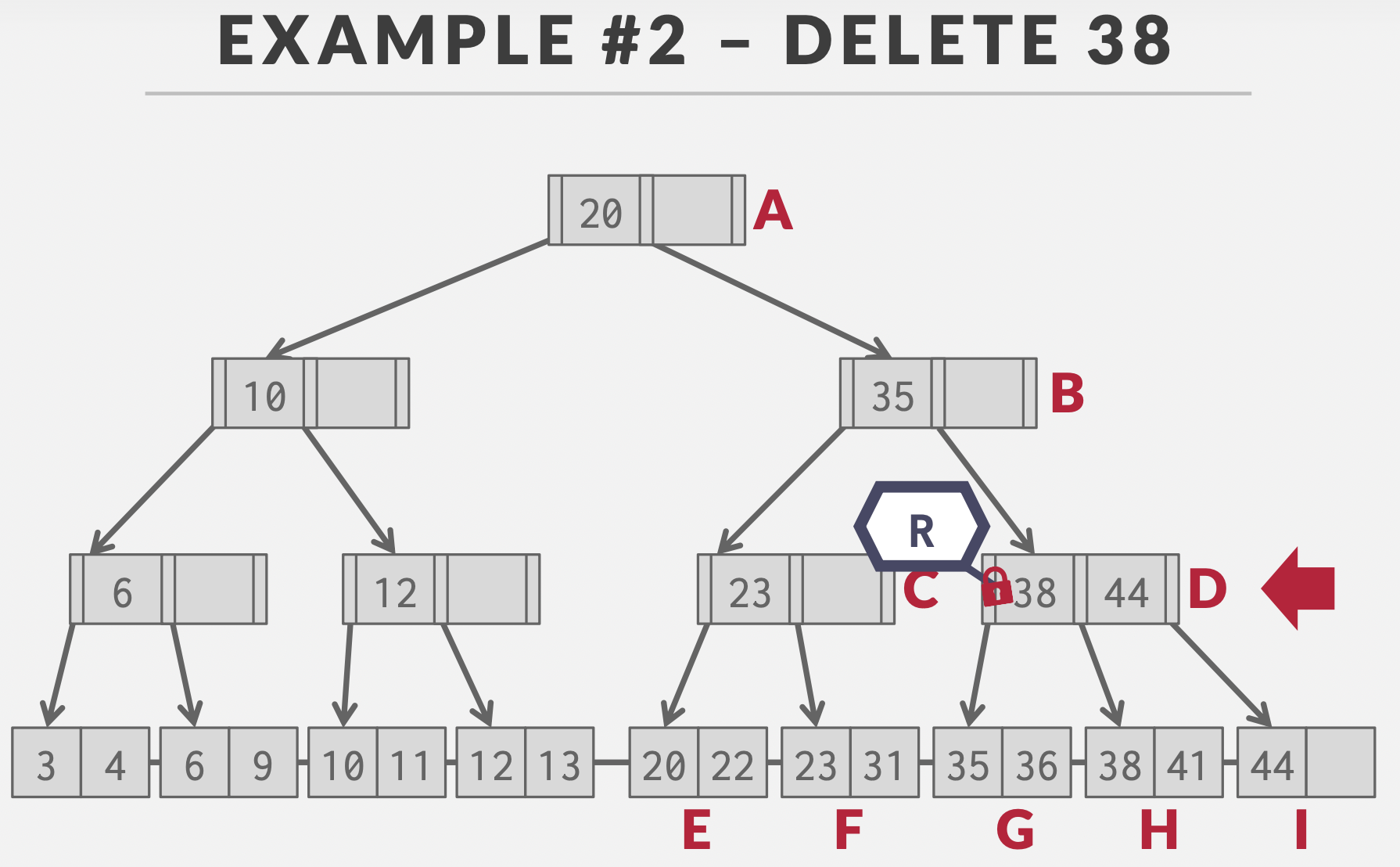
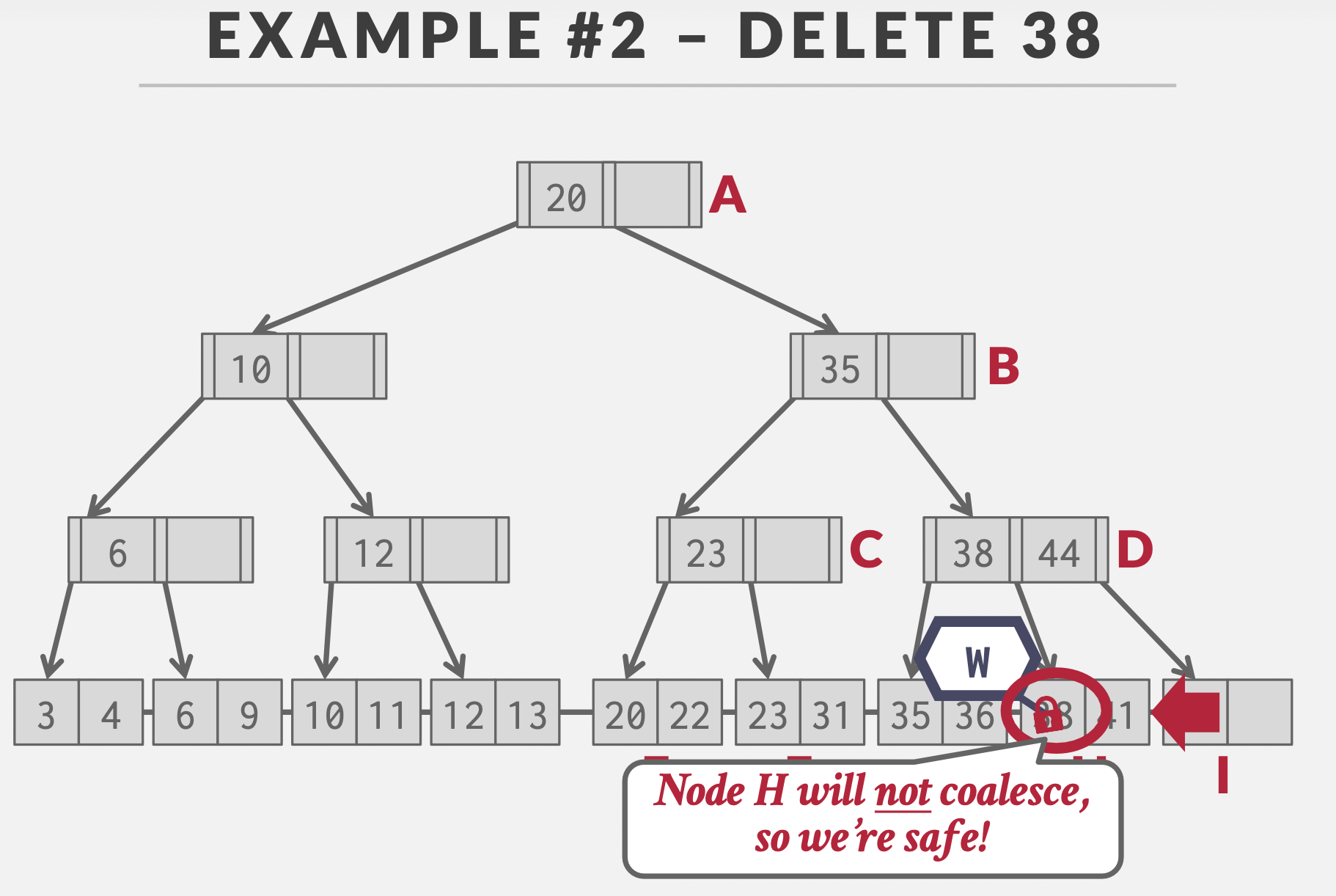
Leaf Node Scan
叶子结点扫描顺序:
- 垂直方向:自顶向底
- 水平方向:没有限制
扫描方向冲突:
- 水平扫描方向不一致导致冲突
- 水平扫描和垂直扫描冲突
水平扫描方向不一致:读锁没有冲突,互换读锁即可。
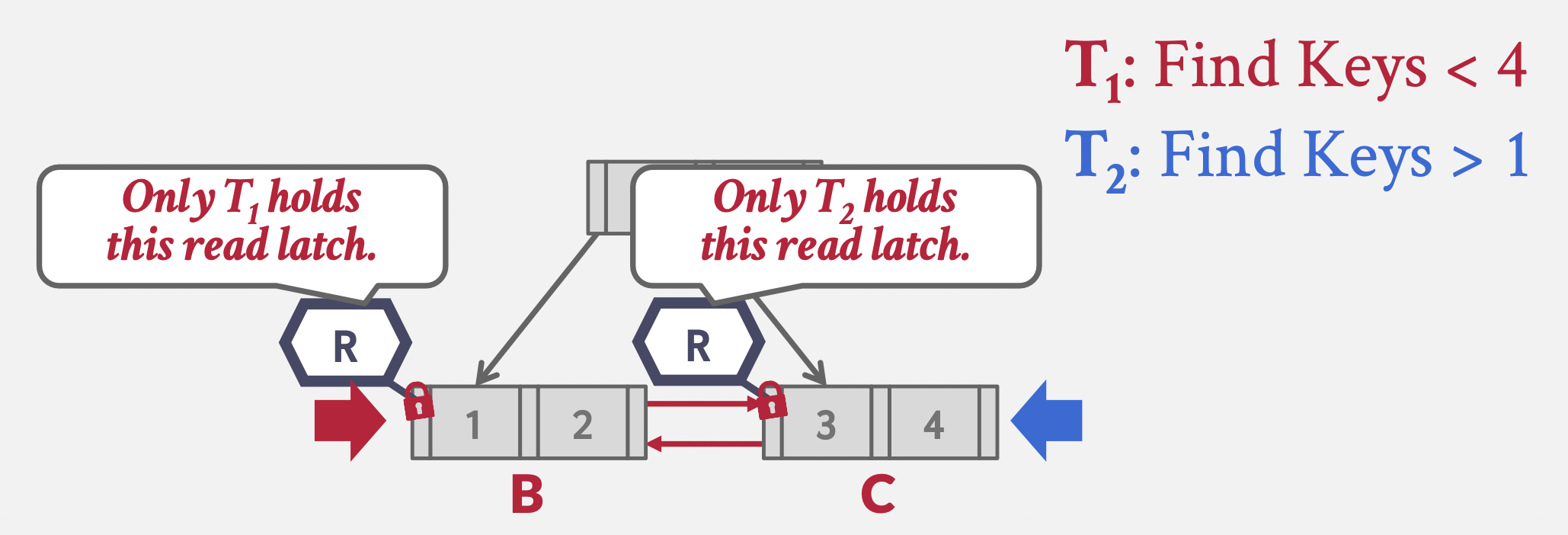
水平扫描方向不一致:带写锁时会有冲突,选择自我终结。
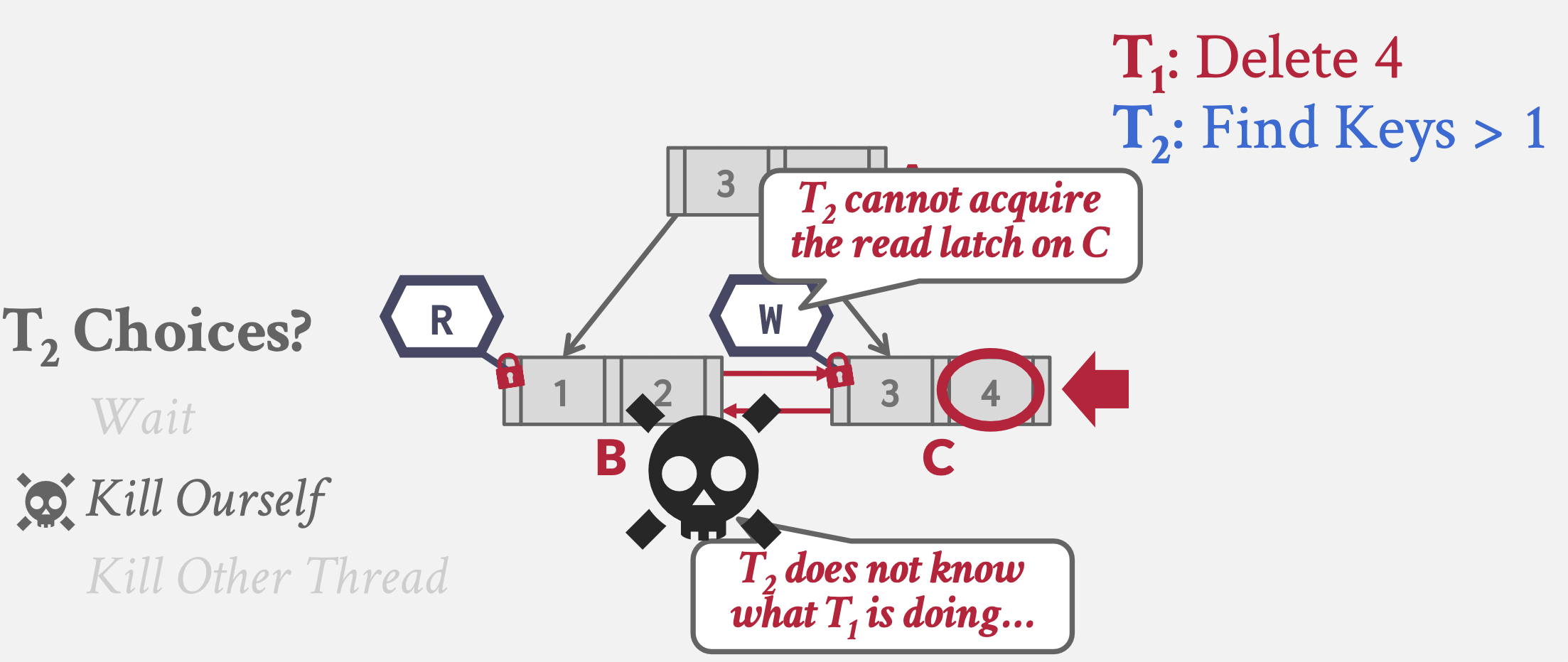
为什么选择自我终结:根本原因是latch是低级原语,不涉及全局信息,唯一知道的只有自己的信息,所以选择自我终结。
- 涉及到读写磁盘,等待时间不定
- 不知道其他进程进行到什么程度,也不知道其他进程是什么状况
为什么水平方向不能强制一个方向扫描:影响效率,在数据规模变大时更为明显。
比如where子句是where id > 100000,如果强制从左到右,得扫描100000条数据
水平扫描和垂直扫描方向不一致:
垂直到达叶子结点的操作,在遇到水平进行的操作时,同样会遇到上述问题,处理方式也相同。



